Why you should avoid Barcelona in 2025…and where to go instead
For years Barcelona has grappled with overtourism. 2024 brought protests and even had locals squirting tourists with water guns.
It will only be worse in 2025. It is one of 3 Spanish destinations that Fodor’s Travel has added to their “No List” as places to avoid because of anti-tourist sentiment (the other 2 are Mallorca and the Canary Islands). If that’s not enough, Barcelona will also be doubling its tourist tax this year in order to discourage overtourism.
I’ve never had any love for Barcelona, I think it’s one of the most overrated cities in Europe. If there’s a silver lining above it’s that it might actually persuade people to discover some of the other great cities in Spain.
So where to go if not Barcelona? This post covers that.
11 Places in Spain Other than Barcelona
A. The Historic Cities of Castile y Leon
Castile y Leon has some beautiful historic cities that get few foreign tourists. And its cities can be easily reached by train from Madrid or even Barcelona.
Segovia
One of our favorite Spanish cities. It is a UNESCO World Heritage site and has 3 incredible highlights: the Roman Aqueduct (built by the Romans in the 1st century), the Alcazar (a palace/fortress that served as the residence for the monarchs of Castile), and the Cathedral of Segovia (which is considered one of Spain’s top cathedrals).
But it’s more than that. Segovia is a fortified city built on a hill with sweeping views of the countryside. You can climb the city walls and visit churches, towers and palaces. Like many of the cities of Castile y Leon, the city reeks of history.
Getting to Segovia: an hour from Madrid by Avanza bus or 25 minutes by high-speed train (but the train station is 20 minutes away by taxi. So I recommend the bus if coming from Madrid).
How much time to spend in Segovia: we spent 2 days and wished we had stayed another day. The city totally charmed us.
Where to stay: we stayed at the Infanta Isabel. Excellent hotel, good rates and perfect location on Plaza Mayor (across from the Cathedral).
Food: Segovia is known for Cochinillo (roast suckling pig) which is served with a bean stew. We had it at Restaurante El Bernadino which is very popular among locals.
More on visiting Segovia.
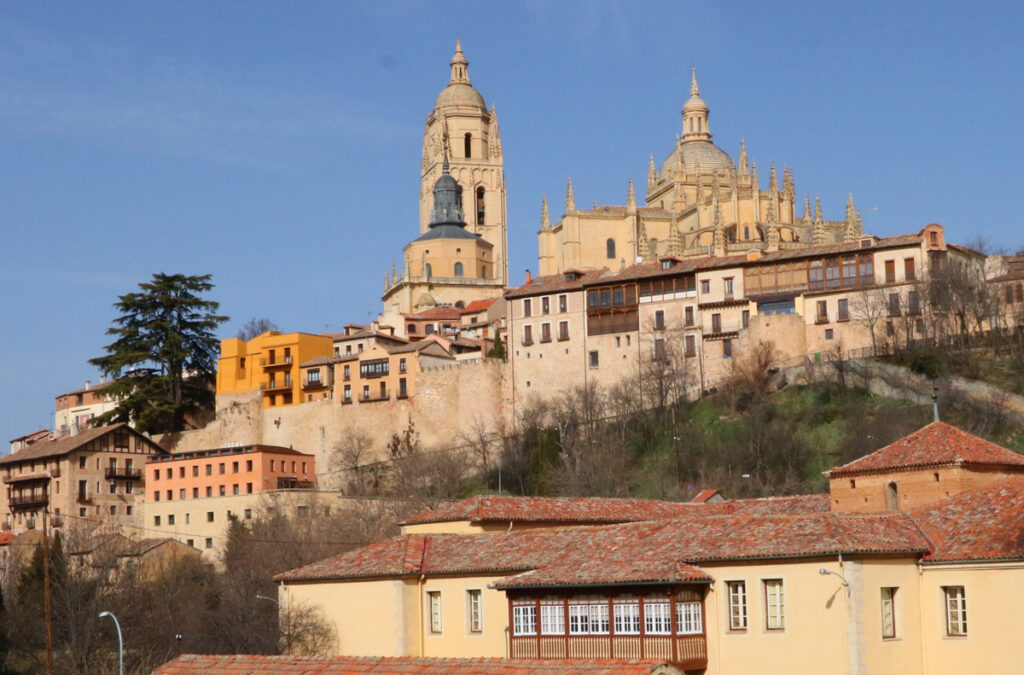
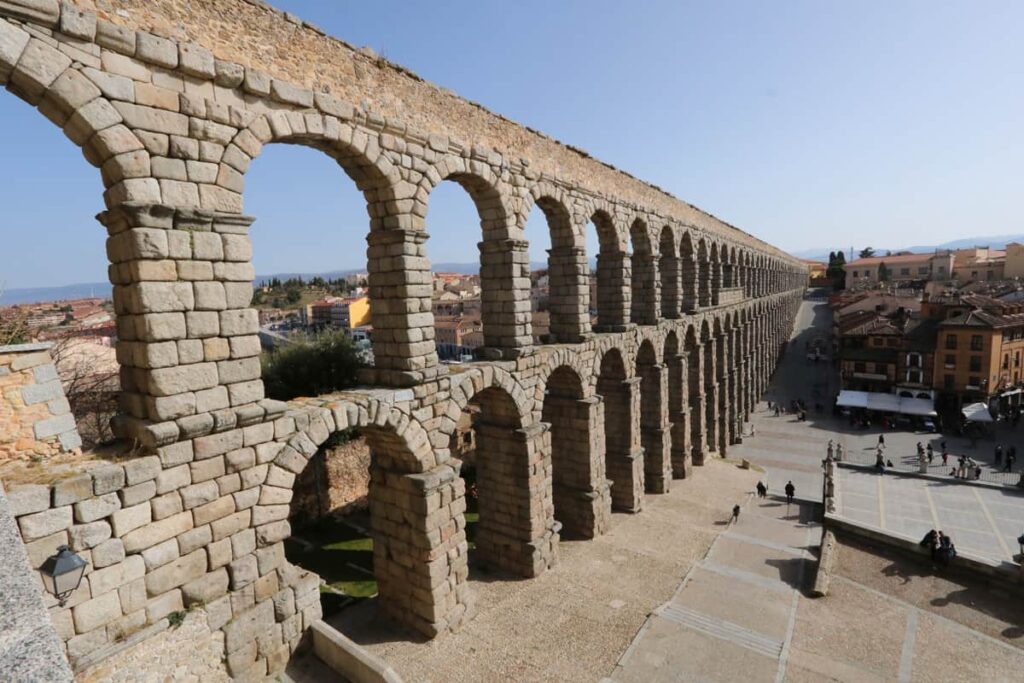
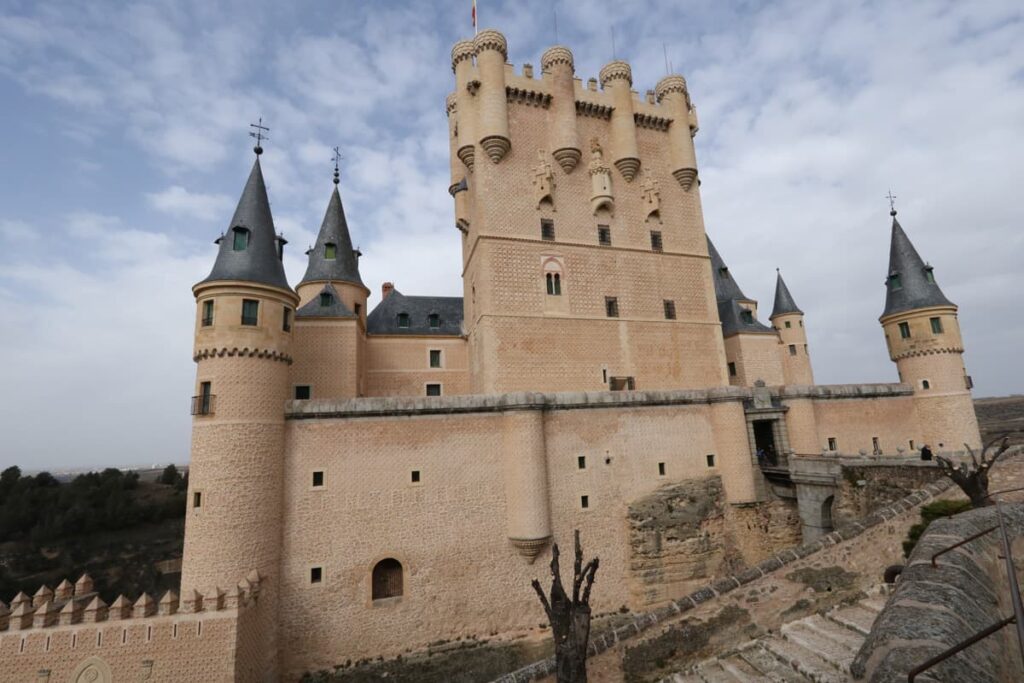
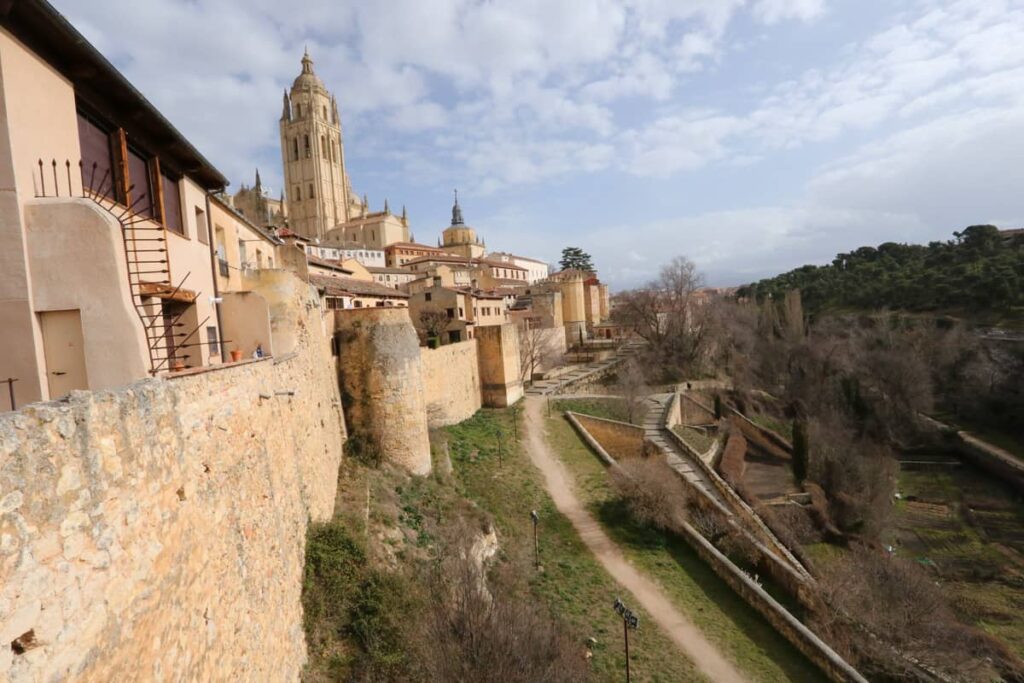
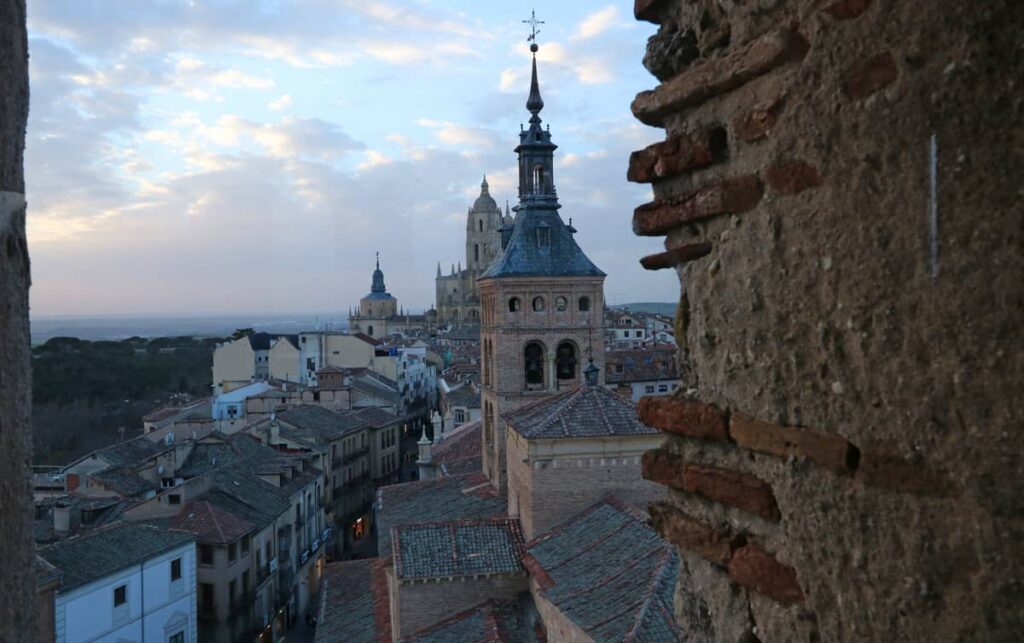
Ávila
Not far from Segovia, Ávila has the best preserved and most complete medieval walls in Spain. It is Spain’s version of Carcassonne (France) and is a UNESCO world Heritage Site.
You can walk along most of the 2.5 km of walls. The city is also a pilgrimage site, made famous by Teresa of Ávila. Although Ávila is small, there are a lot of churches for a place of this size.
Besides the walls, highlights include Ávila Cathedral (Spain’s oldest Gothic Cathedral having been started in 1091), the Convent of Santa Teresa and the Basilica de San Vicente.
Getting to Ávila: Most people come to Ávila from Madrid. The best way is by train (it takes 1 ½ hrs from Madrid’s Principe Pio station or Chamartin station). Ávila is an hour from Segovia by Avanza bus and an hour by train to Salamanca.
How much time to spend in Ávila: I think 1 day/1 night is ideal. It’s not a big place and can in theory be visited on a day trip but you might feel a bit rushed.
Where to Stay in Ávila: Hotel Palacio de Valderrabanos, located right next to the cathedral.
More: What to see in Ávila
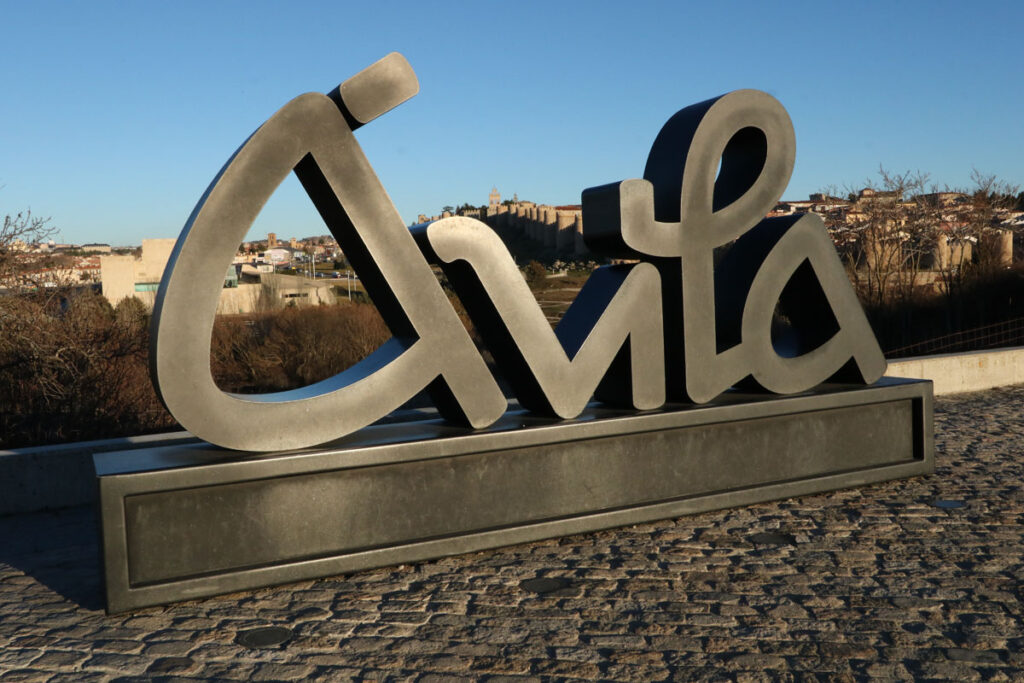
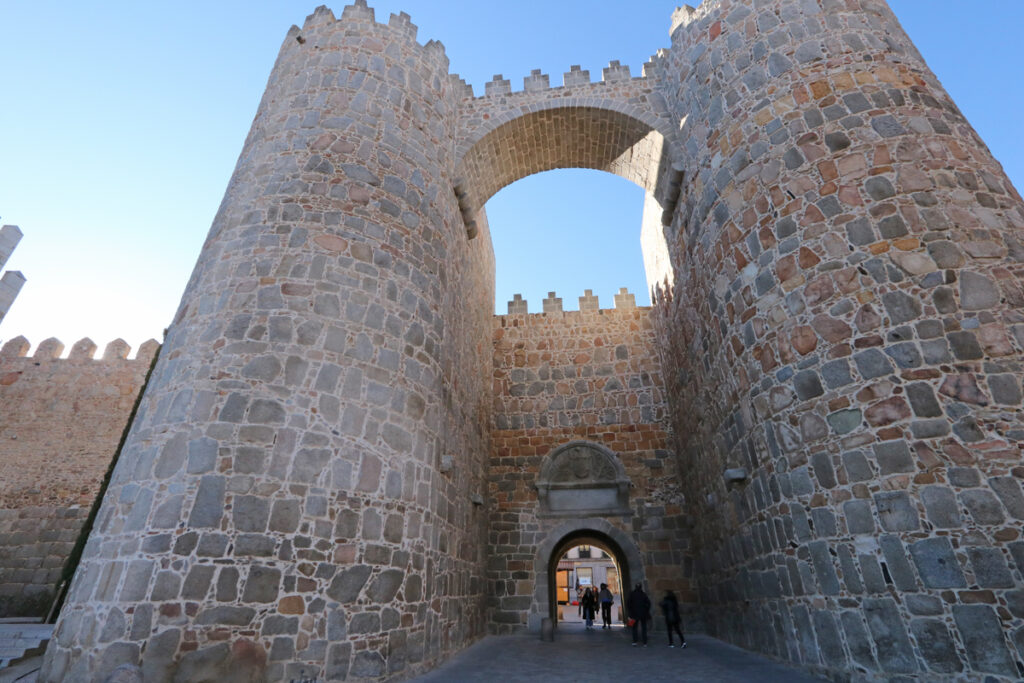
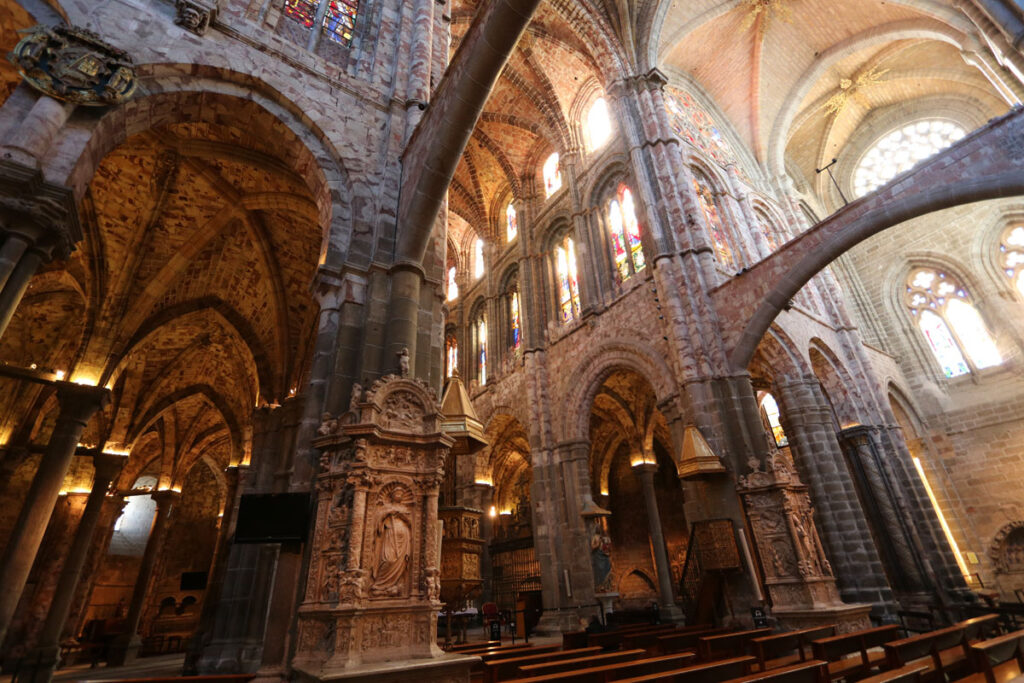

Salamanca
Just like Segovia and Ávila above, Salamanca is a UNESCO heritage site and known as the “Golden city” because of the colour of its buildings. It is a larger city than the above and has lots to see including two Cathedrals (a rarity), the 3rd oldest university in the world and a plaza (Plaza Mayor) that is considered one of the most impressive in Spain. It has a Roman bridge, the convent of San Esteban (just as impressive as the two Cathedrals) and a few other buildings and churches that are very impressive.
Getting to Salamanca: trains from Madrid take anywhere from 1 hour 40 minutes to 3 hours (depending on the train). Segovia is 1 hour 15 minutes away and Ávila is about the same. The Train station is about a 20-minute walk from Salamanca’s old town.
How much time to spend in Salamanca: You should have at least 2 days to properly see the city.
Where to stay: I would recommend Sercotel Puerta de la Catedral. It’s perfectly located right in the heart of the old town.
More: Is Salamanca worth visiting?

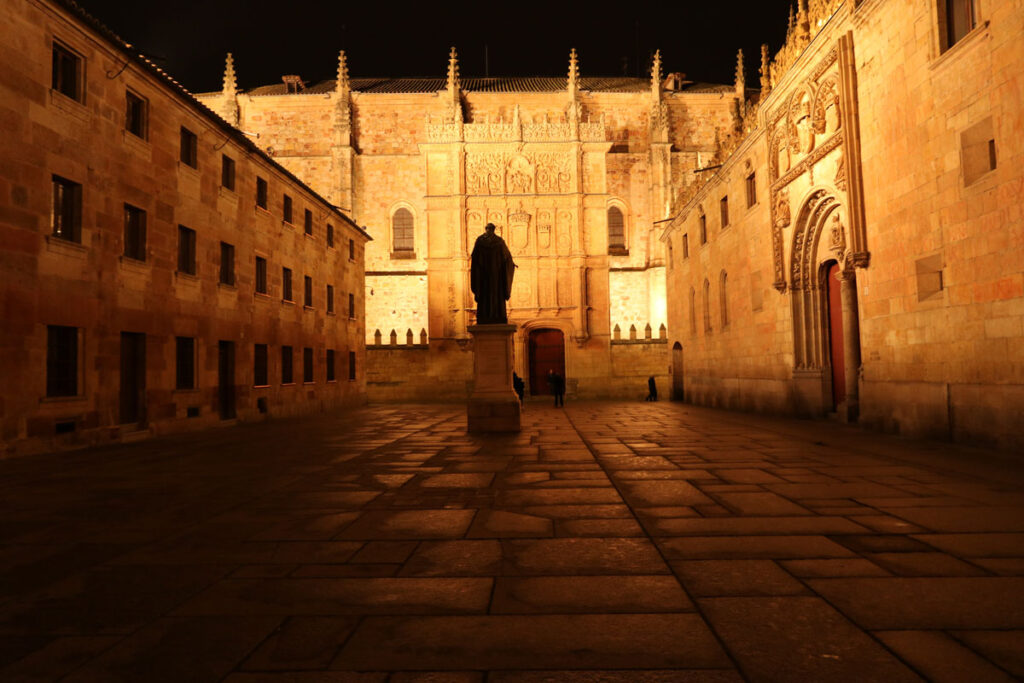

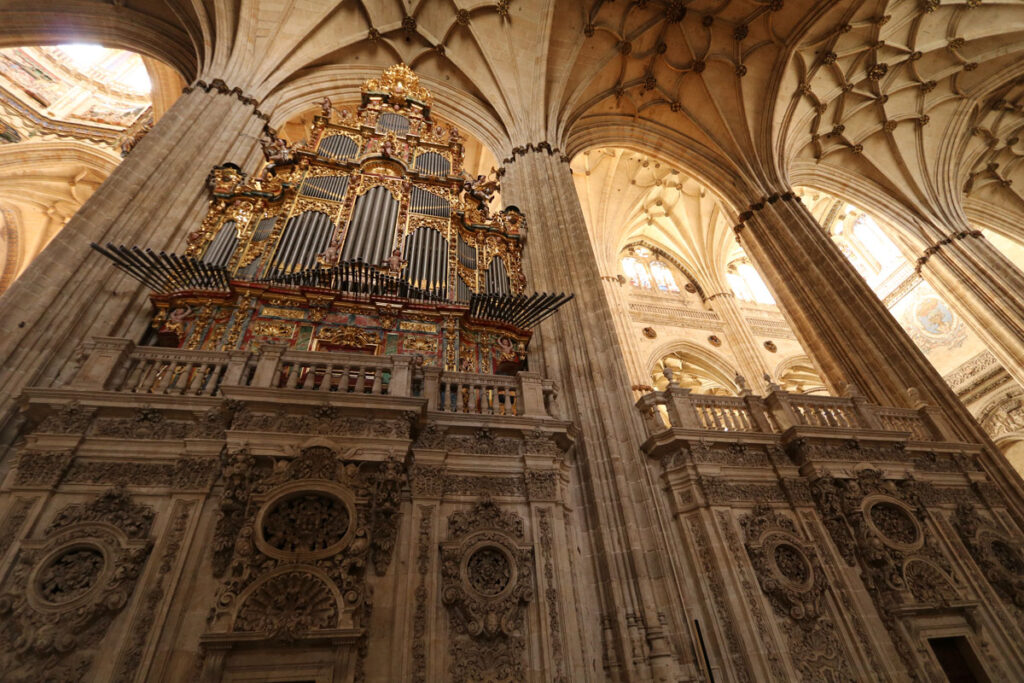
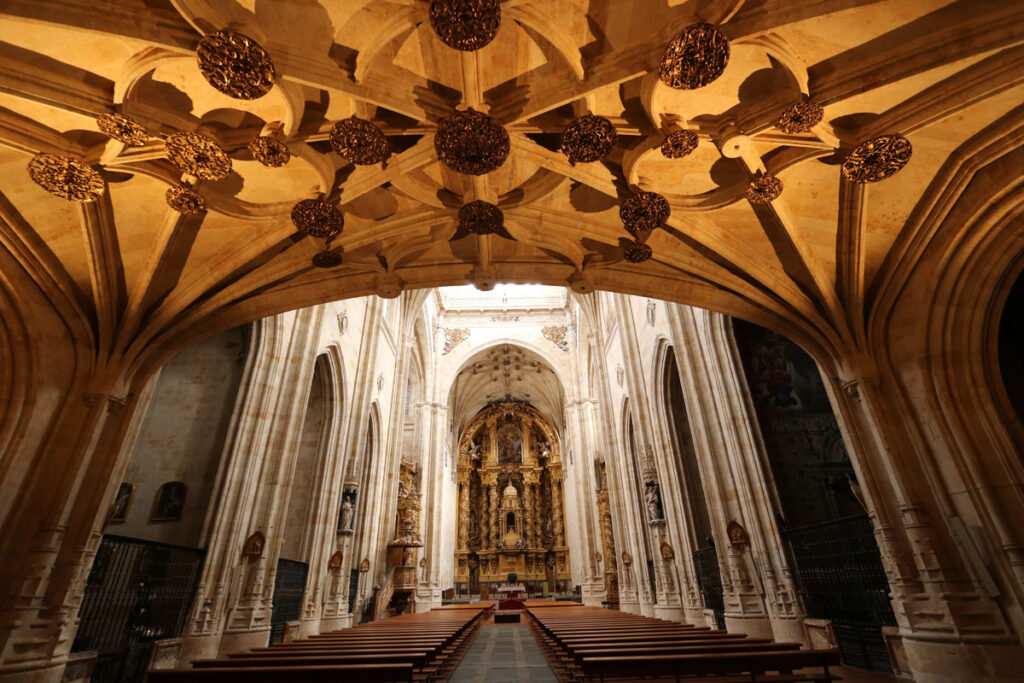
León
We really got to know León – we were stuck here for 4 months during lockdown in 2020. Lots of highlights including León Cathedral (another Top Cathedral, it is known for its stained glass), Plaza Mayor (one of the oldest main squares in Spain), Casa Botines (built by Gaudi) and the Convento de San Marcos (now converted into one of the best paradors in Spain). There is a lot more to see in León which I cover in this post: Highlights of a self-guided walking tour of León.
Getting to León: 2 hours 20 min from Madrid by train, 3 hours from Salamanca by train, 1 hour 20 minutes from Burgos by train.
How much time to spend in León: I would give it at least 2 full days.
Where to stay: If you want to splurge, try the Parador in the Convento de San Marcos. A less expensive option is the Hospederia Pax on Plaza de Grano (our favorite square in the city)
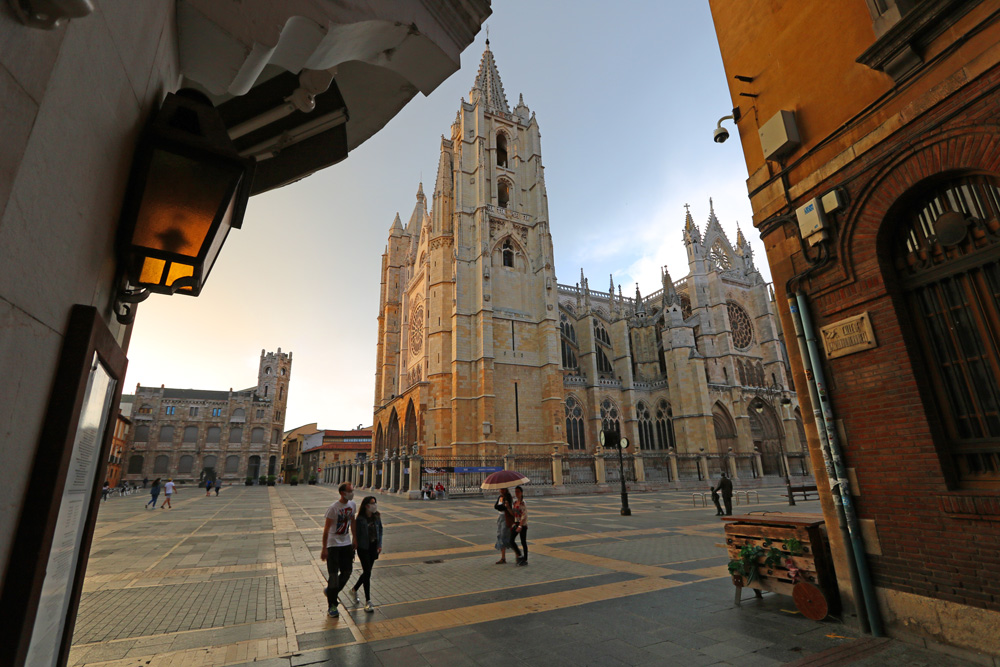
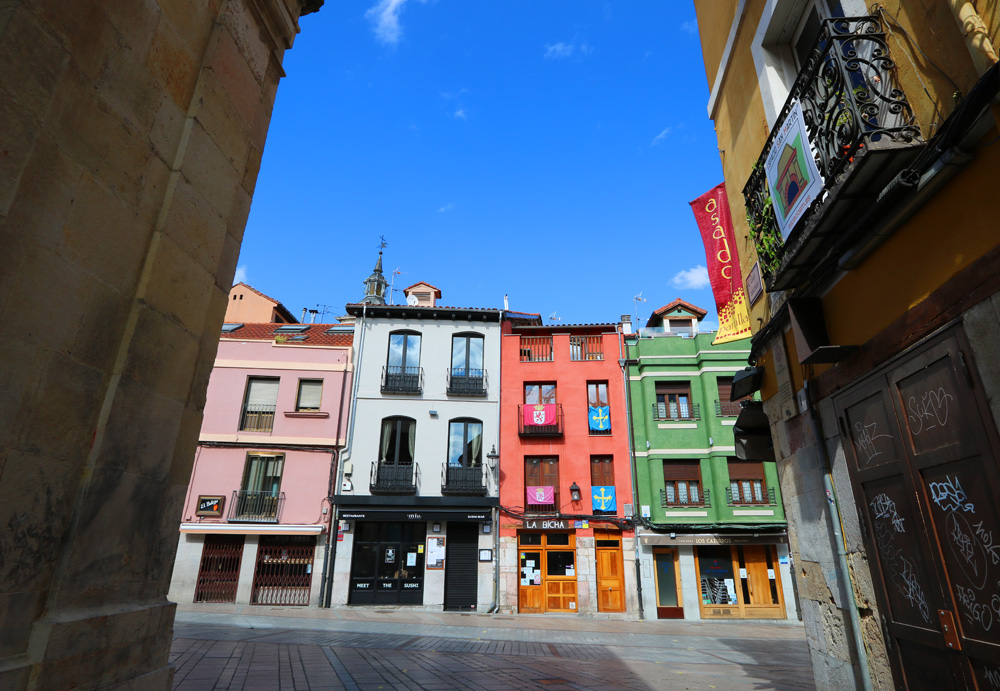
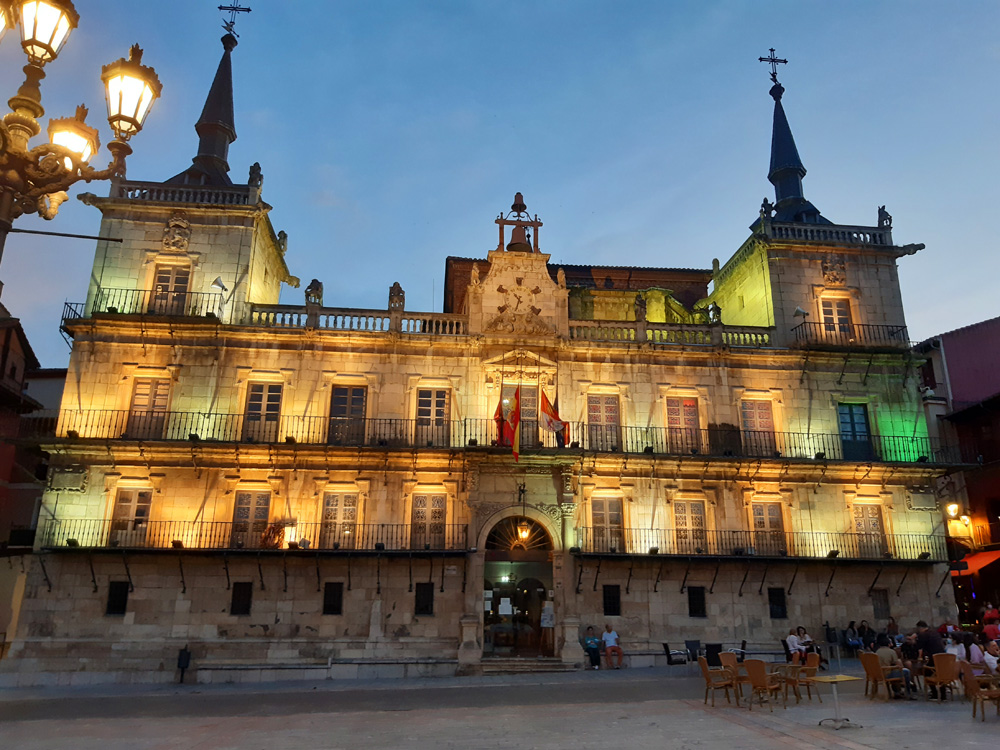
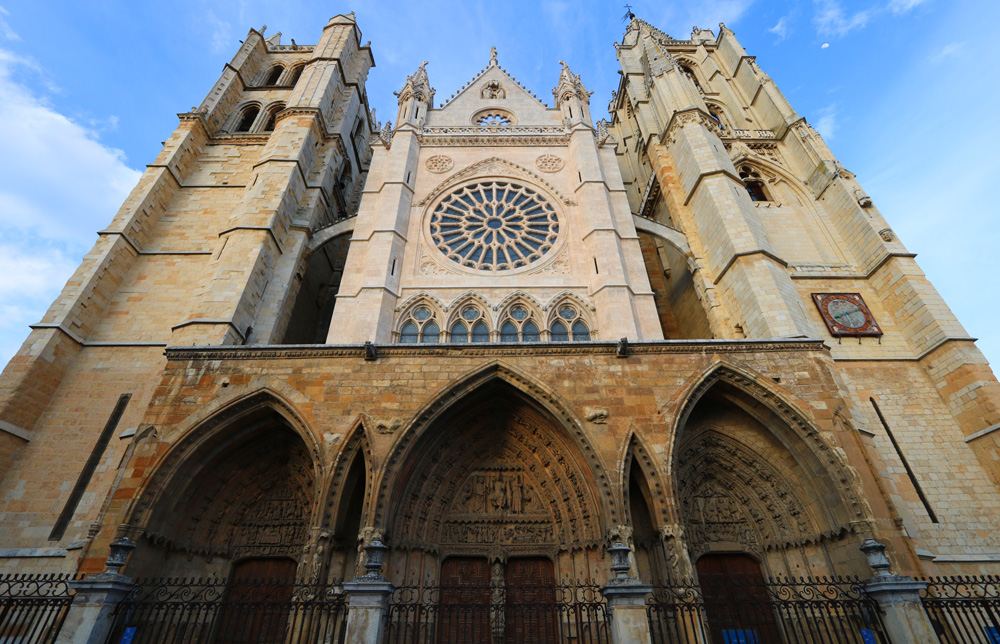
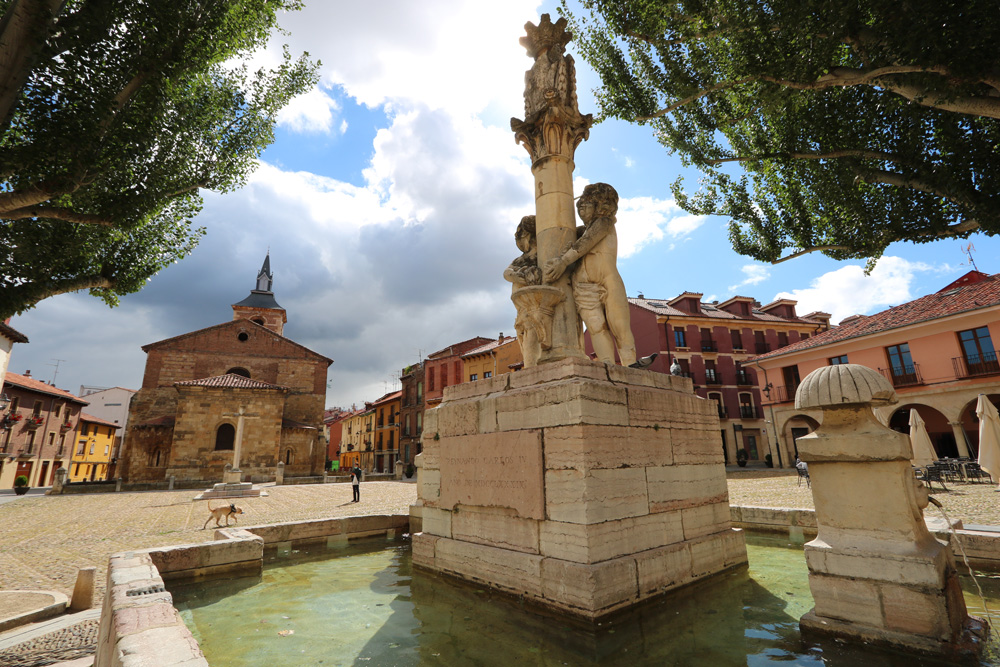
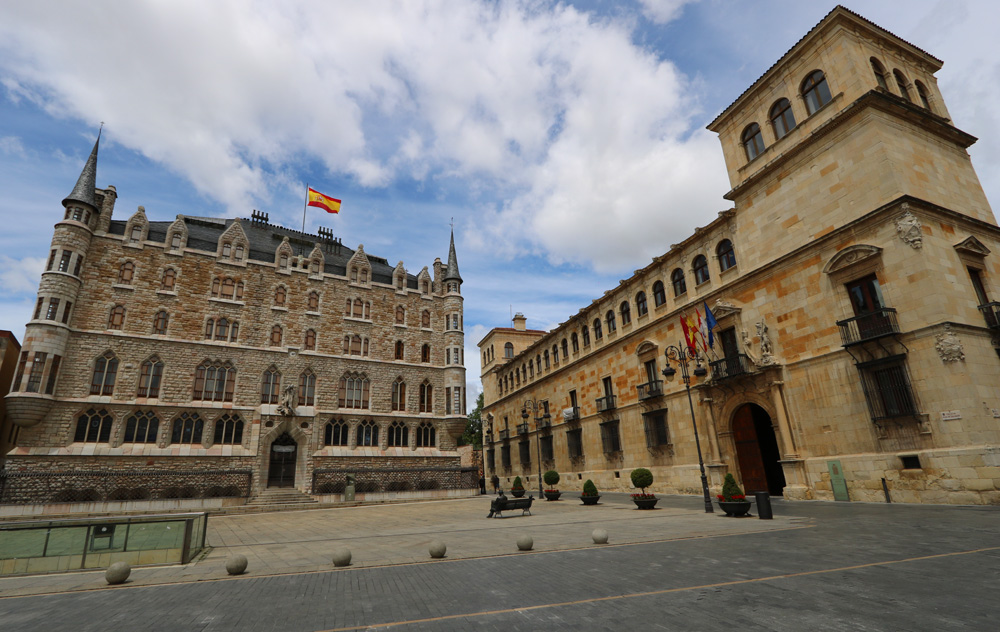
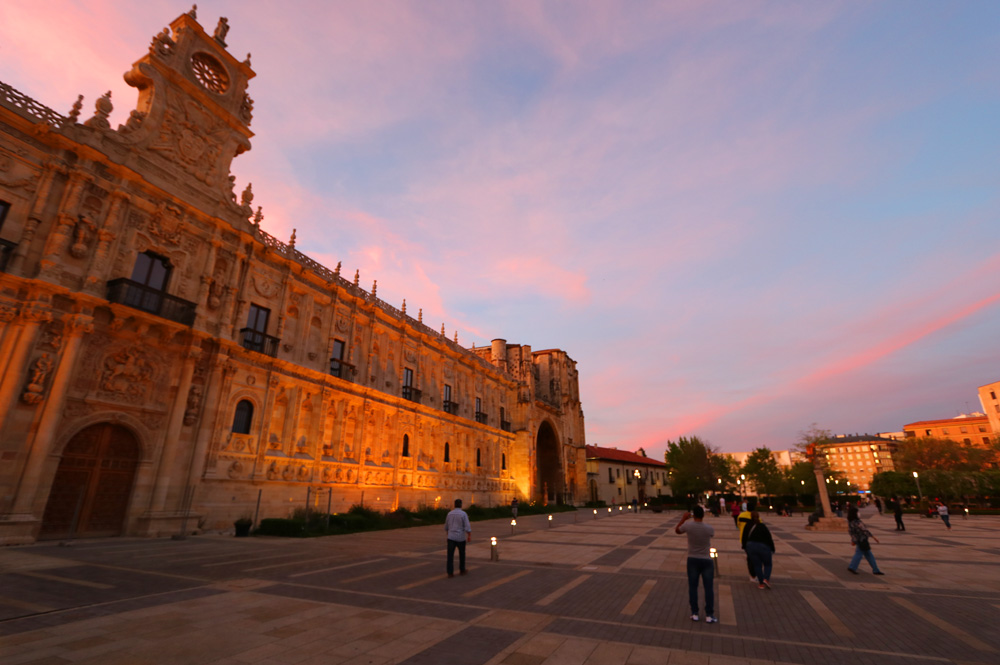
Burgos
One of Spain’s most beautiful cities and another UNESCO World Heritage site.
The most famous highlight is Burgos Cathedral, one of the top Cathedrals in Spain. It is filthy in its opulence, an extravagant display of wealth. There’s the Arco de Santa Maria, the Paseo del Espolón, the Monastry of Santa María la Real de Las Huelgas. There are countless churches, a scenic river and a mirador overlooking the city, beautiful squares…just a really attractive city.
Getting to Burgos: Burgos can be reached in 2 hours by high-speed train from Madrid. Burgos is also on the Salamanca – Barcelona train line (which is not high speed). We took it from Salamanca and had stops in Burgos, Zaragoza and then Barcelona. Salamanca is about 2 ½ hours from Burgos by train.
How much time to spend in Burgos: I would give it at least 2 full days.
Where to Stay: El Arco de San Esteban right next to the center (we increasingly use Booking.com for apartments). If looking for a hotel, we recommend AC Hotel Burgos by Marriott.
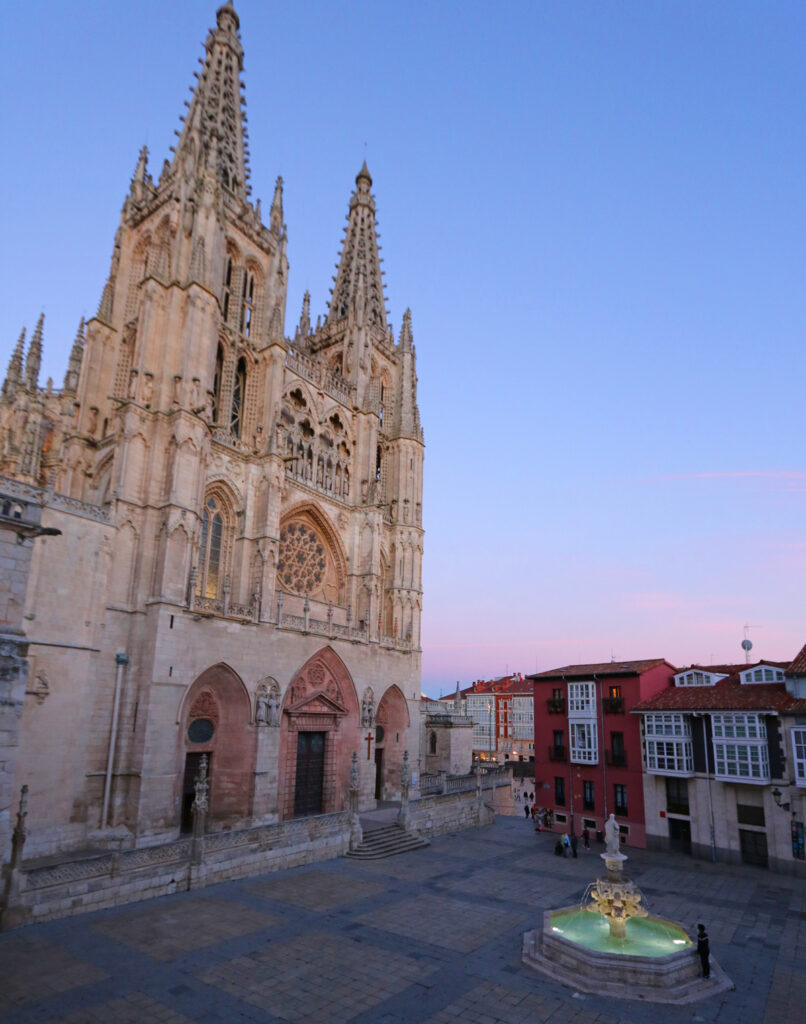

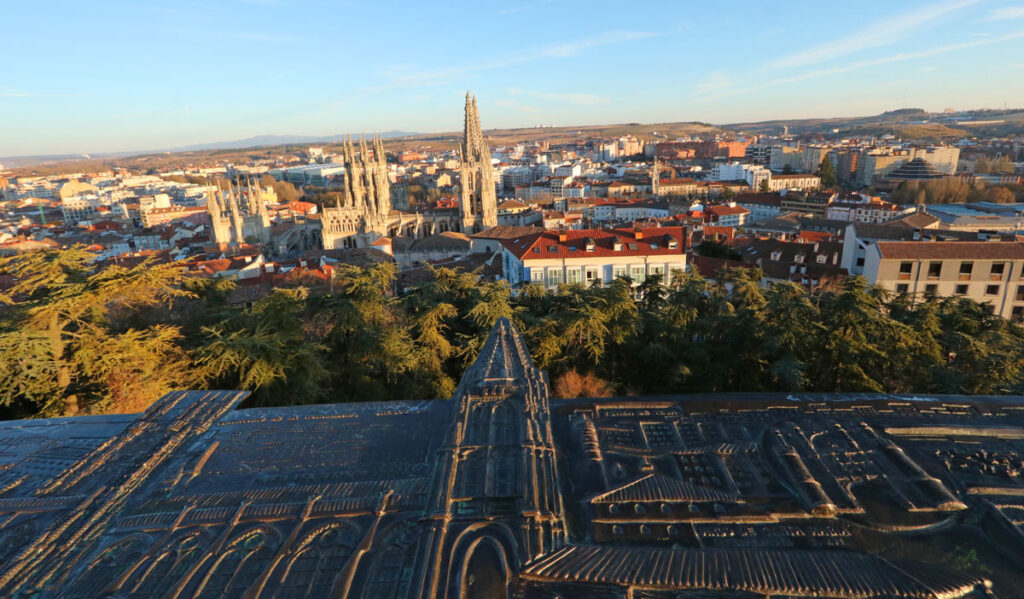
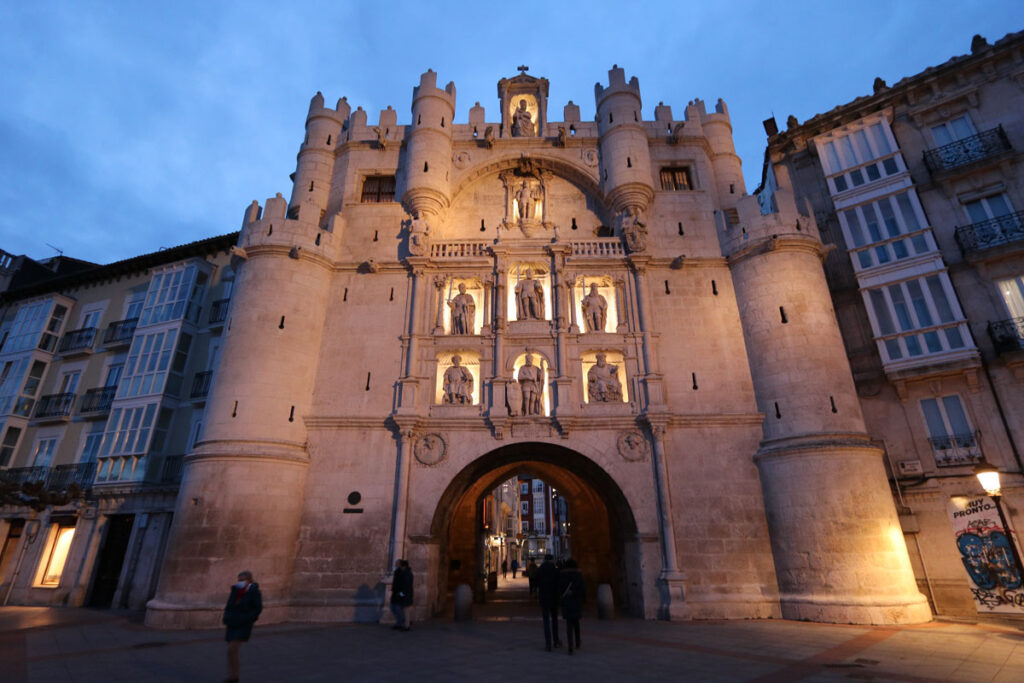
You could easily spend a week to 10 days exploring the above 5 cities of Castile y Leon and be amazed by the wealth of history that you see. It’s a very underappreciated region of Spain, one of our favorites.
B. Madrid and Toledo
Smack in the middle of the country, Madrid is a modern city with large boulevards and beautiful 19th century architecture. 30 minutes away by train, Toledo is one of Spain’s great historic cities.
Madrid
Madrid is the New York of Spain – a busy city with large boulevards, tall buildings, parks and some world-renowned museums. You’ll see theatres on the Gran Via (one of the reasons I associate Madrid with New York).
The center is very walkable and the buildings (in different architectural styles) impressive. Unlike Barcelona, Madrid is a “modern” city and very different – but I prefer Madrid.
Much more on Madrid and it’s highlights in this post: 48 Hours in Madrid.
How much time to spend in Madrid? Well, you could easily spend a week, especially if you’re a big fan of museums. But 48 hours allows you to get a glimpse into the city, which for us was fine for an introductory trip.
Where to Stay: We stayed in this Airbnb apartment right in the center of Madrid. Very nice with an excellent location. We walked to all the highlights. Right close by is the Ibis Styles Madrid Prado which would have been our choice had we chosen a hotel.
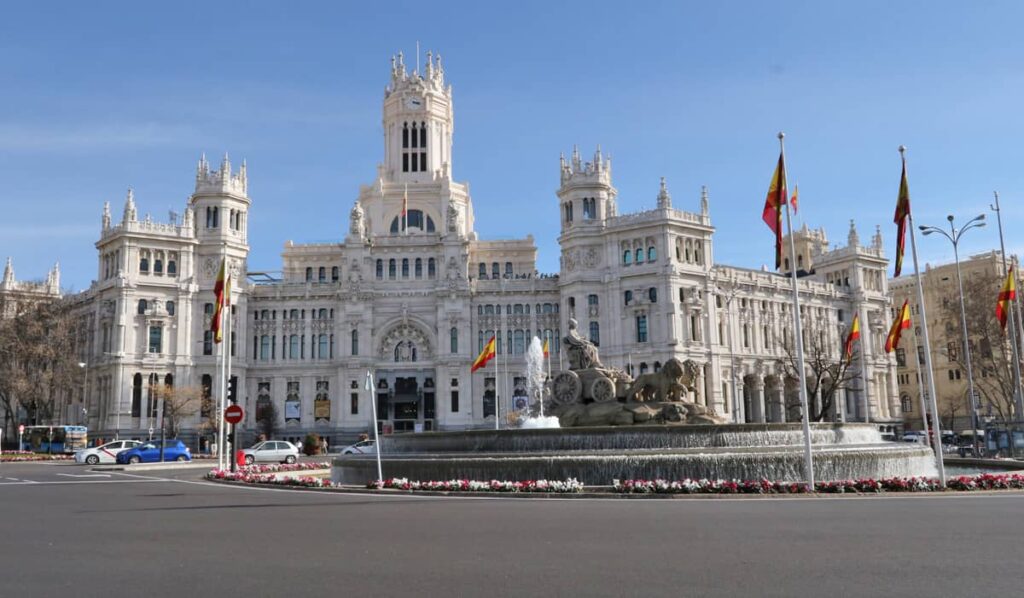
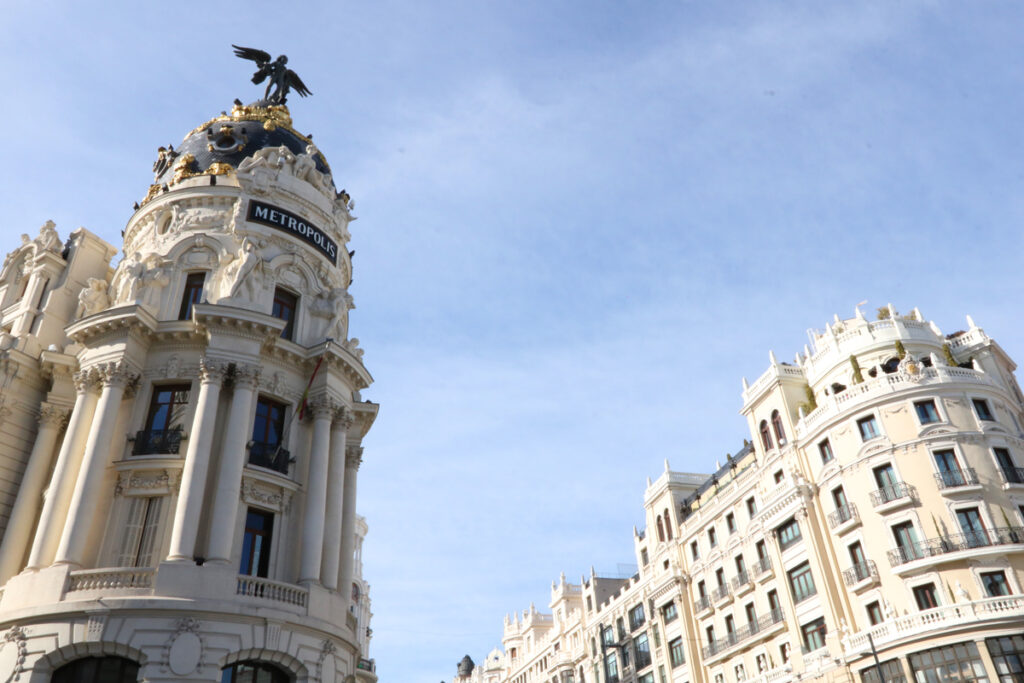
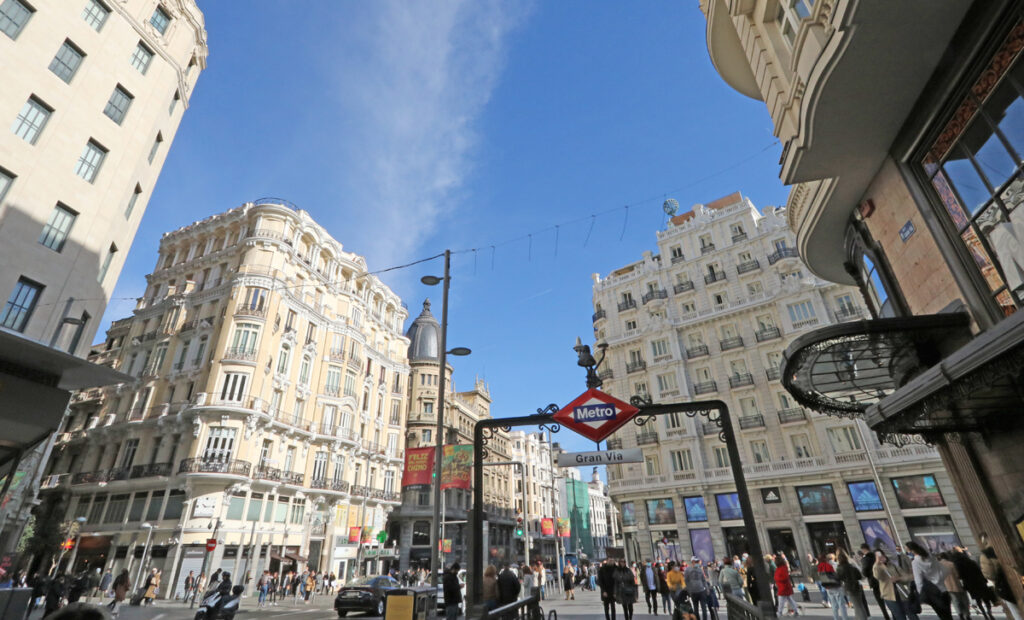
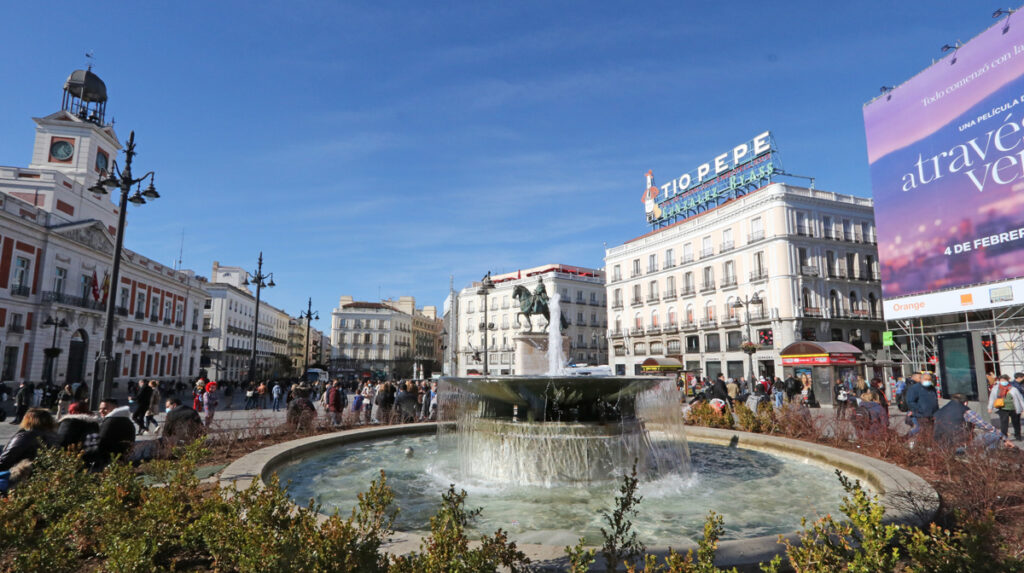
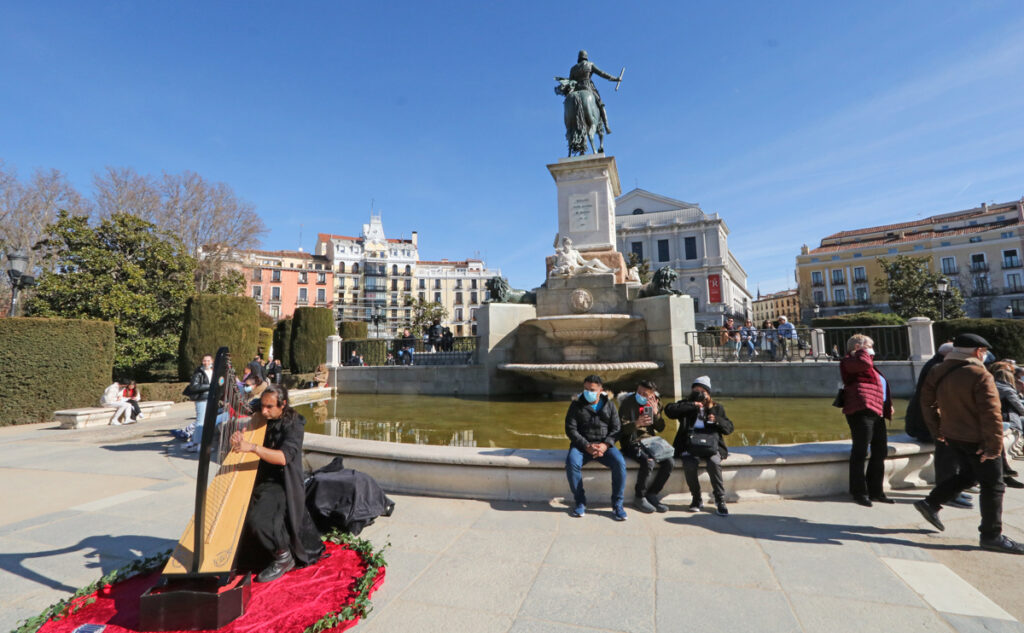
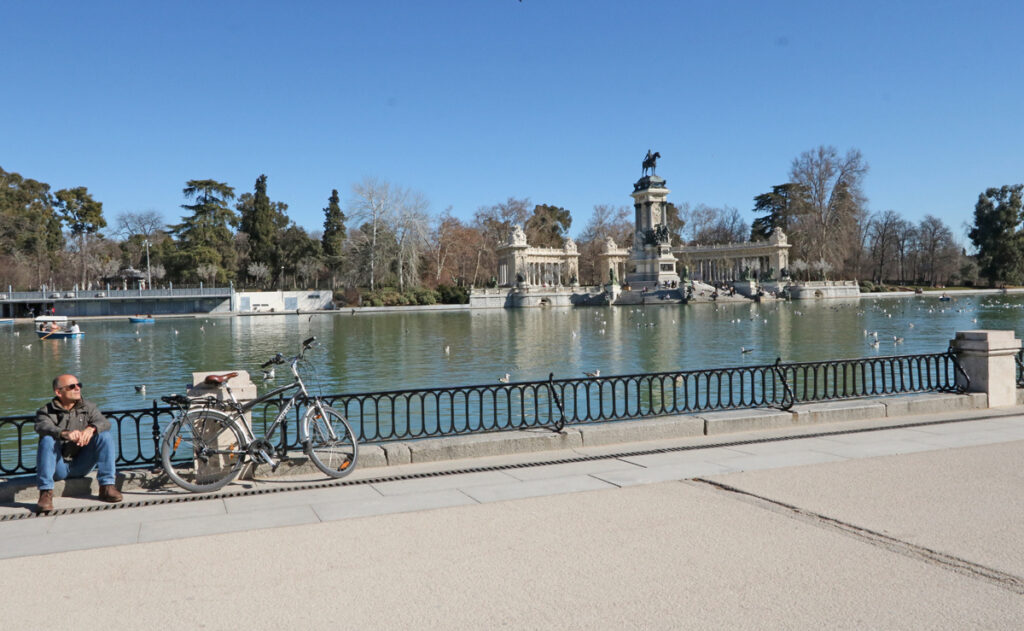
Toledo
Toledo is one of Spain’s most famous cities. It dates back to the Romans (circa 192 BC) and was under Visigoth and Moorish rule before falling back into Christian hands during the reconquesta in 1085 AD. Subsequently, it was the capital of the Spanish Empire until the mid 1500’s – that’s when the royal court moved to Madrid (which has been the capital ever since).
Tons of history in Toledo encompassing Moorish, Jewish and Christian history. You’ll also see impressive fortifications and incredible views from across the river which will make you appreciate the city’s special geographic location.
Lots to see in Toledo including another of Spain’s most famous Cathedrals. I cover it all in this post: What to see in Toledo (and how to save money).
Getting to Toledo: Toledo is a 30 minute train ride from Madrid Atocha station. From the train station you can take a bus (about 20 min) to Toledo’s main square (Plaza Zocodover).
How much time to spend in Toledo: We were in Toledo 2 days and despite going on a blitz didn’t see everything we wanted. I’d suggest 3 or 4 days.
Where to Stay: We stayed at Barrio Rey hotel which was excellent value and well located. A slightly pricier option is Casa Palacio Rincón de la Catedral (as the name suggests, right next to the Cathedral).
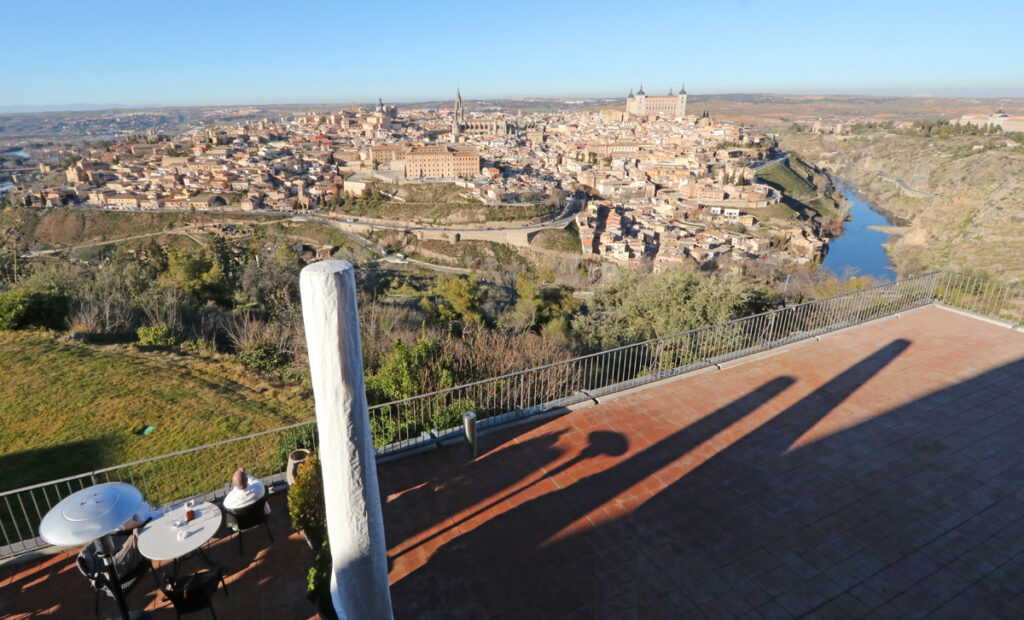
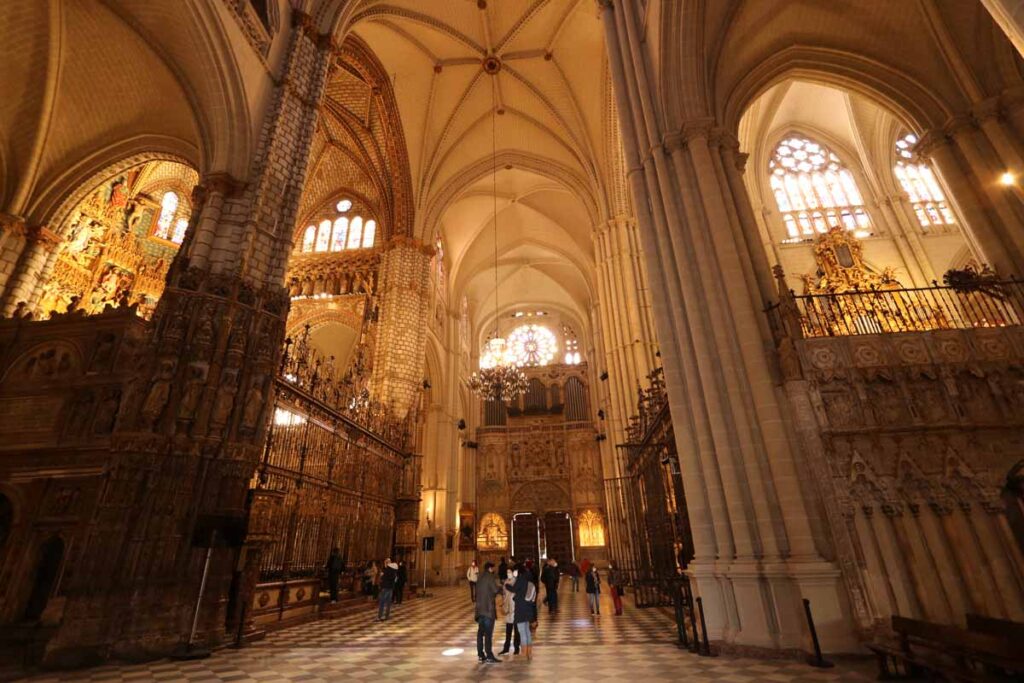
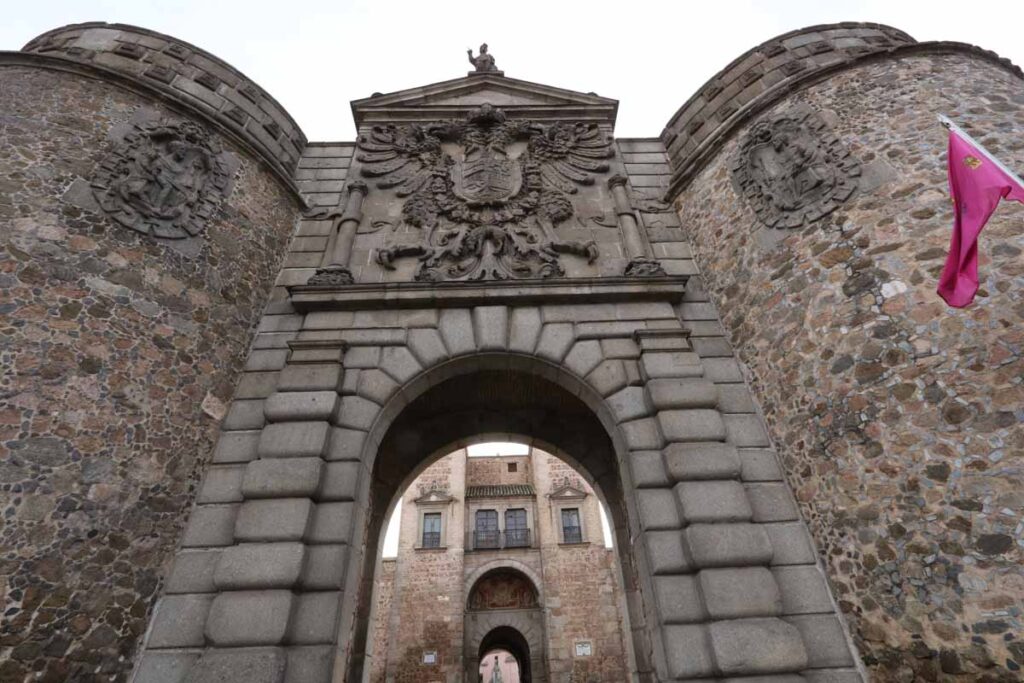
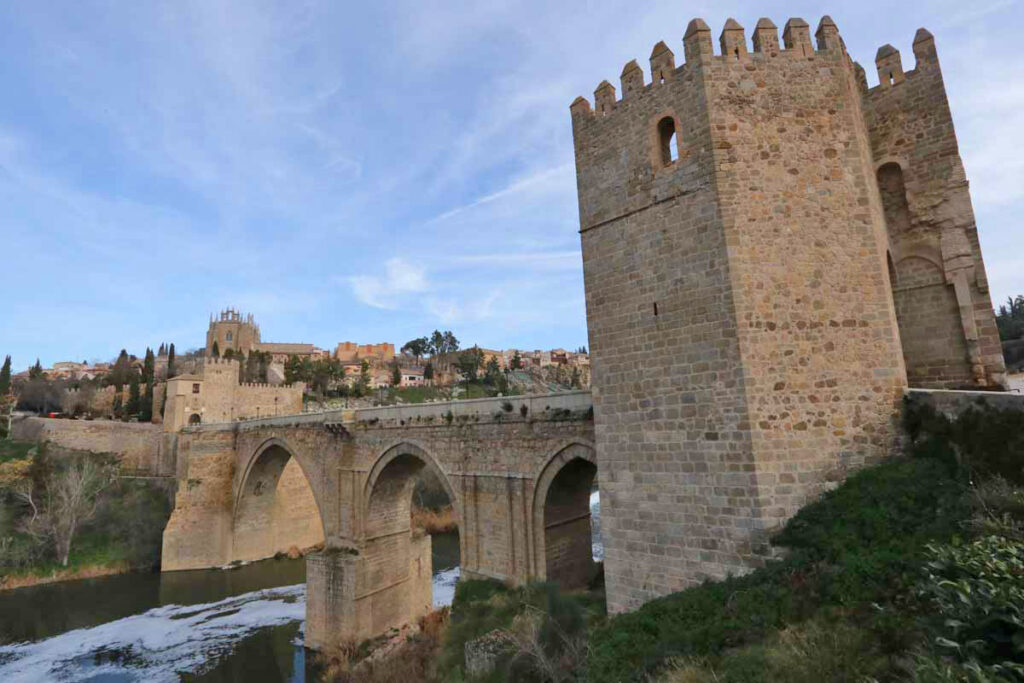
C. The Best of the Andalusian cities
The Moors controlled Andalusia longer than any other part of Spain and there is an incredible legacy of Moorish architecture and history in this region that makes it unlike any other. 3 cities here stick out.
Córdoba
Córdoba is a beautiful medium-sized city that was for a time the capital of the Moorish Empire that ruled over the Iberian peninsula.
Here you’ll find what is possibly the most incredible building we’ve seen in our lives: the “Mosque–Cathedral of Córdoba”, known unofficially as the Mezquita. It is one of the world’s largest mosques (built starting around 785 AD, it took over 200 years to complete) with a Cathedral in its center (added by the Catholics in the 1200’s when the Catholics gained power over the city). It is an incredible building as you see in this post.
Córdoba has the Alcázar of Córdoba, the fortress/palace that was the home of the Catholic Monarchs Isabella and Ferdinand. It was the headquarters of the Spanish Inquisition in 1482 as well as the base from which Isabella and Ferdinand commandeered the takeover of Granada in 1492. Later that same year, Christopher Columbus came to the Alcázar to meet with the Monarchs when planning his first trip to the Americas.
There’s more to Córdoba as I cover in this post: Highlights of a day trip to Córdoba. But the city is worth more than a day trip. It’s a beautiful historic city that’s just the right size. One of our favorite places in Spain.
Getting to Córdoba: Córdoba is a very easy day trip from Seville. High speed trains take you there in about 40 minutes. From Granada, you can get to Córdoba in 90 minutes by bus or 2 hours by train. From Madrid, a high-speed train takes 2 hours to get to Córdoba.
How much time to spend in Córdoba: at least 2 days. I’d suggest 3, with a visit to nearby Medina Azahara on the last day.
Where to stay: We stayed at the Hotel Posada de Vallina on our last visit. Nothing fancy but great location next to the Mezquita.
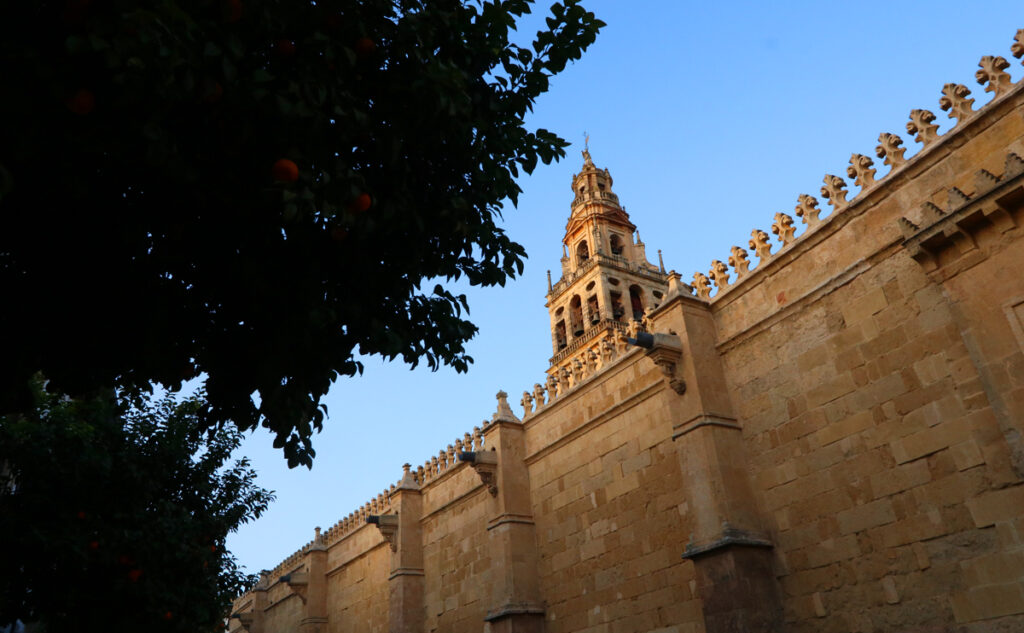
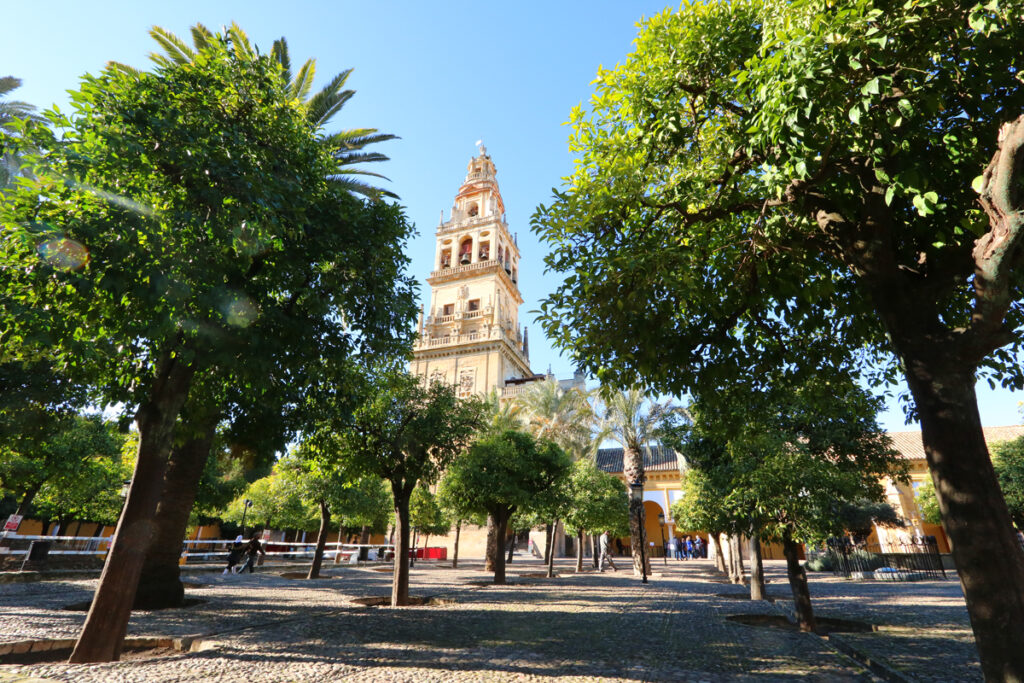
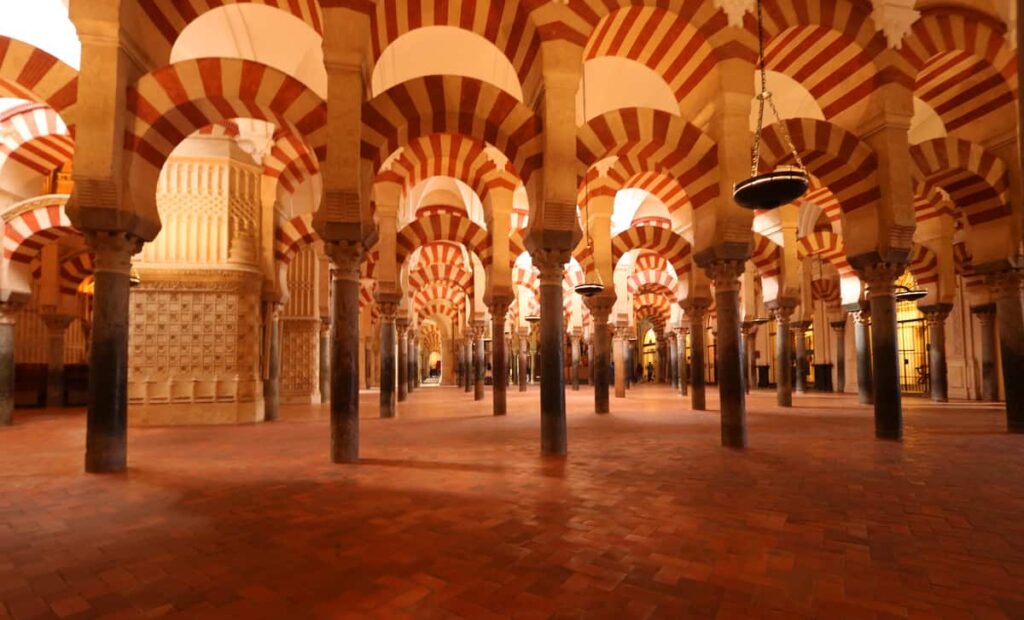

Seville
Seville is full of highlights and might be the most beautiful city in Spain. We spent 2 months here a few years ago and fell in love with the city.
Highlights include the Real Alcázar (a Unesco World Heritage site and a residence of the Spanish Royal family), the Seville Cathedral (the 4th largest Cathedral in the World), and the gorgeous Plaza de España. But there’s so much more including some of the most beautiful palaces in Spain.
This post gives you all the highlights of Seville and tells you how to save money visiting them: What to see in Seville and how to do it on a budget
Getting to Seville: You can get there in 2 hours 40 minutes from Madrid, 40 minutes from Córdoba, 2 hours 40 minutes from Granada, 2 hours from Malaga. All by train (you can also take the bus but I always prefer the train for comfort).
How much time to spend in Seville: 3 days should be the bare minimum. There’s a lot to see.
Where to stay: Excellent, good-value apartment near everything: Global Suites Sevilla. If you want to splurge, you can stay in a palace: Palacio de Villapanés. Budget: Toc Hostel.
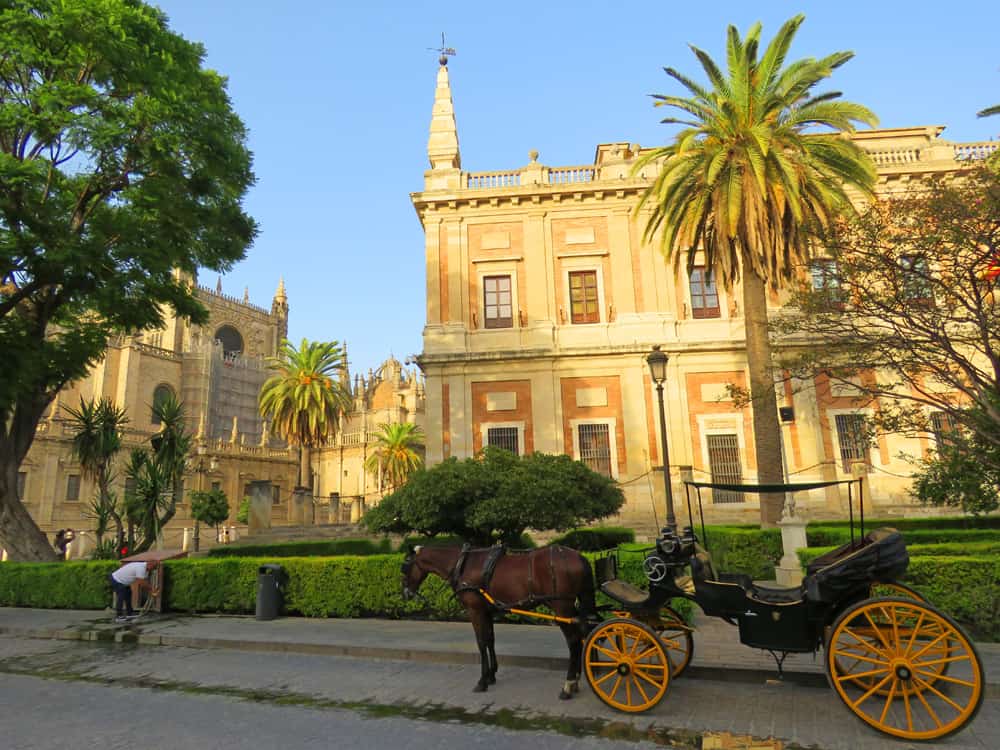
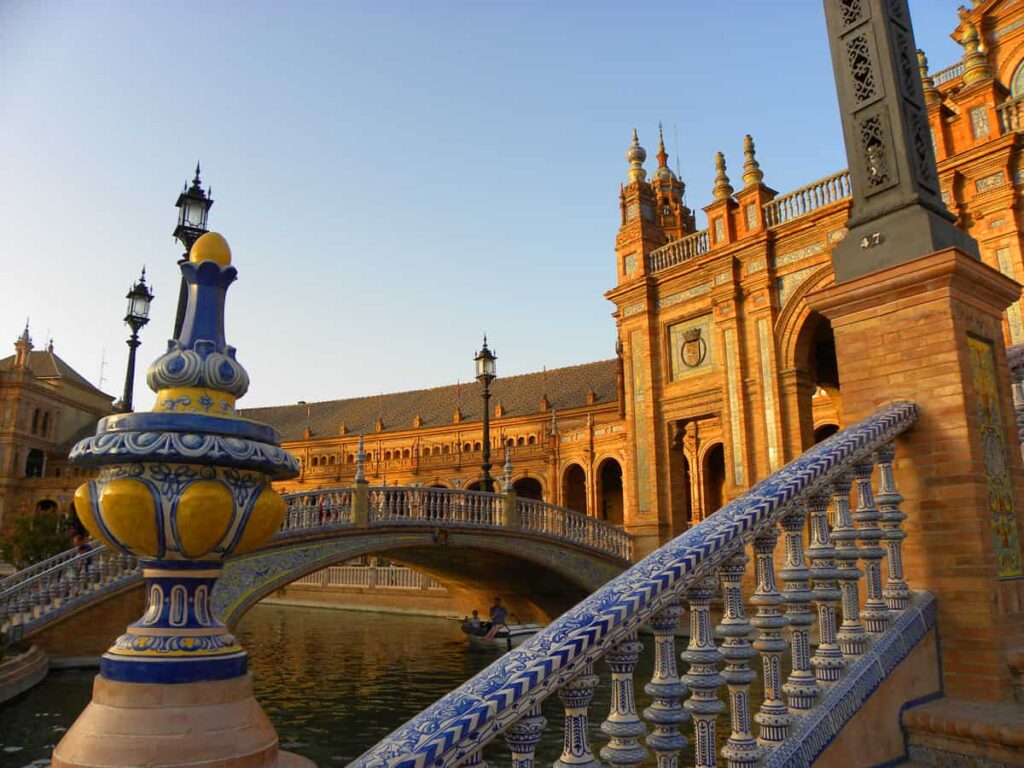
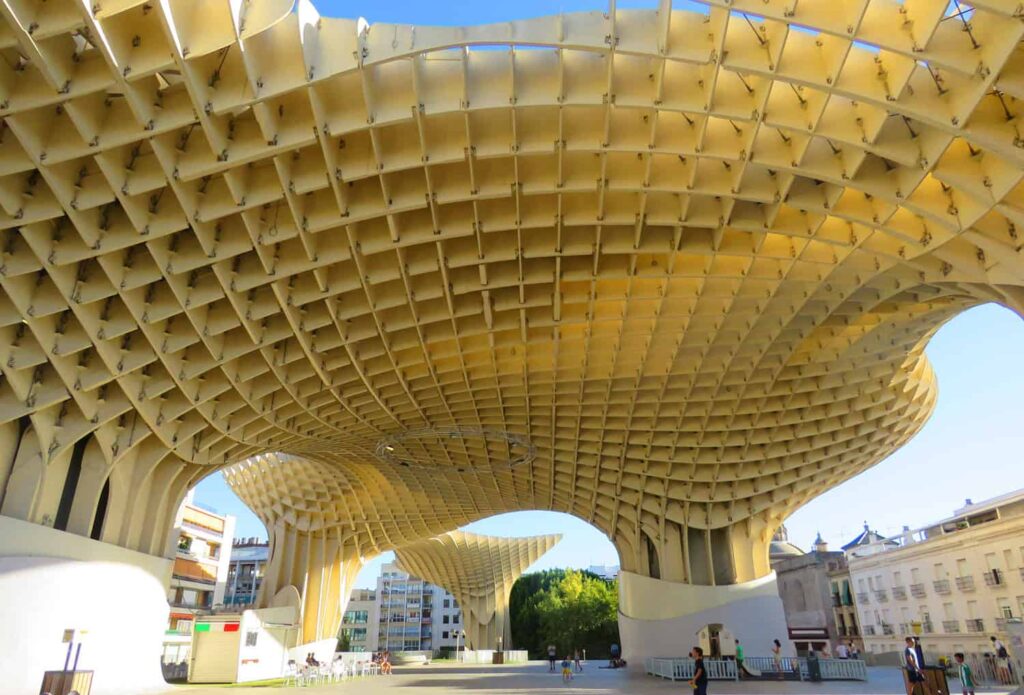
Granada
Home of the Alhambra, the last stronghold of the Muslim Empire on the Iberian peninsula.
Granada is a historic city full of highlights, some of which fall under the radar of many visitors. Prioritize the Alhambra but also visit the Albaicin (the old Moorish quarter), the Cathedral, Royal Chapel, Cartuja Monastery, Basilica de San Juan de Dios, San Jeronimo Monastery, Sacromonte caves museum…
I have a post here on what to do in 2 days in Granada. I’ll be doing another post in the near future on all the sites of Granada (we live in Granada right now)
Getting to Granada: 3 ½ hours by train from Madrid, 1 hour and 50 minutes from Malaga, 2 hours 40 minutes from Granada. All by train.
How much time to spend in Granada: 2 days if you rush through it. I’d recommend 3.
Where to stay: The Best Hotels in Granada (for all budgets)
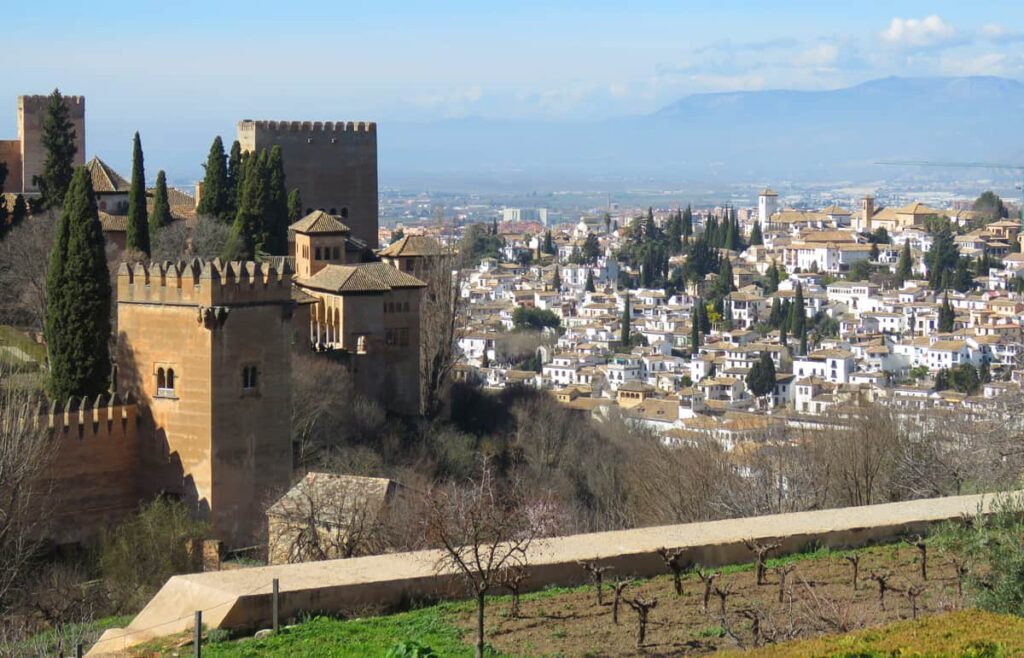
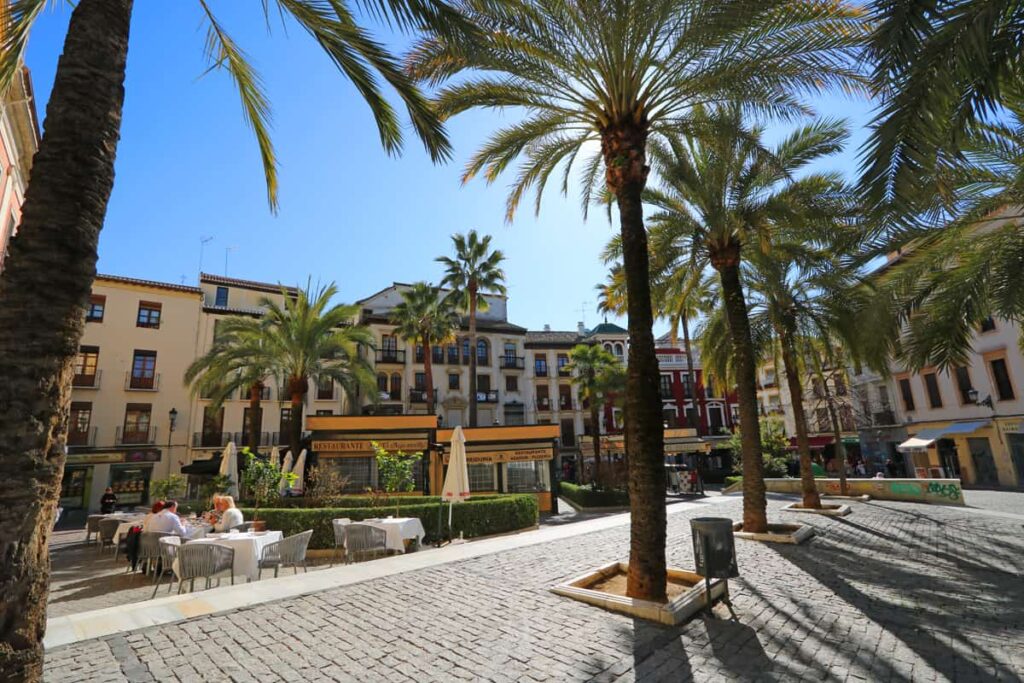
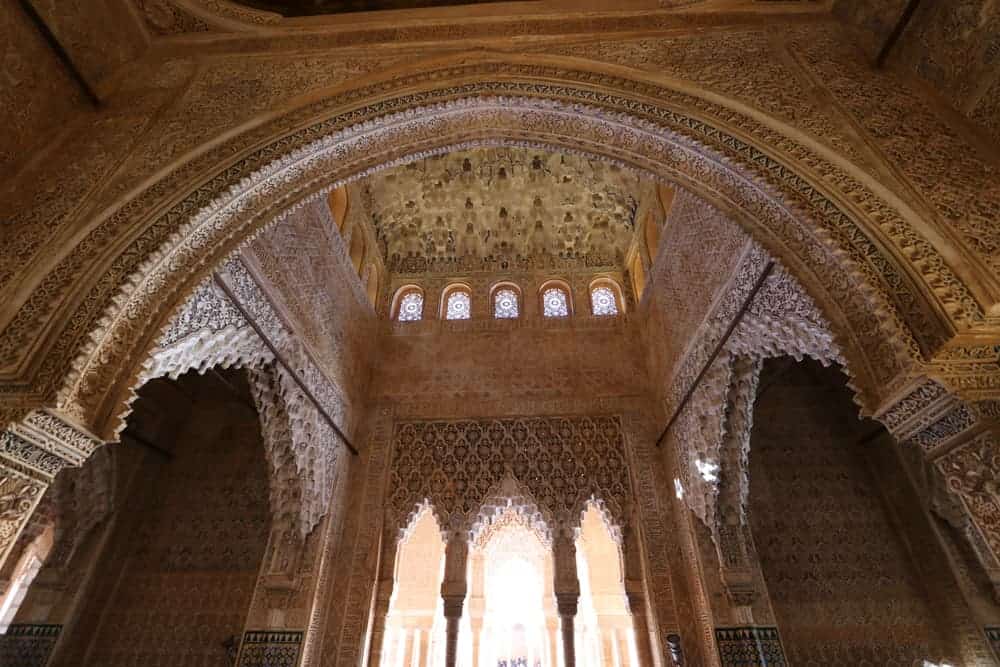
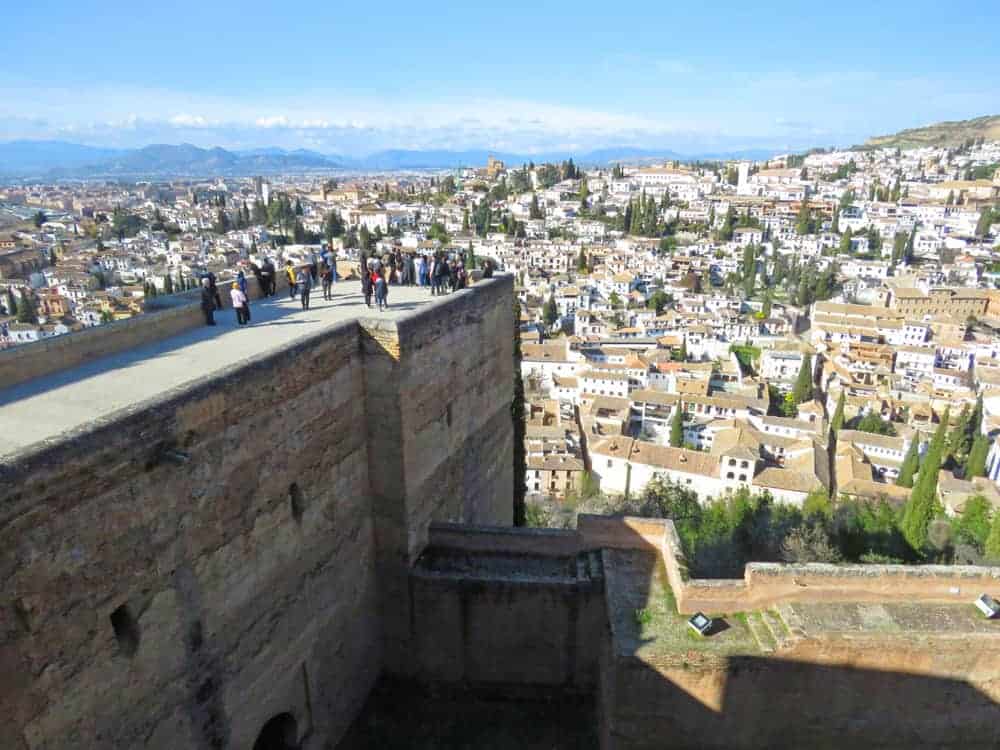
D. Valencia
Then there’s Valencia, a beautiful city about 3 hours south of Barcelona along the coast.
Lots to see here: Valencia Cathedral, La Lonja de la Seda (the medieval silk market – now a UNESCO World Heritage site), the ‘Torres de Serranos’ and ‘Torres de Quart’, the towers that protected the city from intruders. Valencia also has some of Spain’s most beautiful modern architecture, best exemplified by the City of Arts and Sciences complex (which includes Valencia’s aquarium, one of the best aquariums in Spain). It has a city park, the Turia, a 9.8 km park that winds through the city center as well as a Central market considered among the best food markets in all of Europe (if you didn’t know, Valencia is home to Paella). Lots more to see including the unique ceramics museum (located in an incredible building), the Plaza de Toros, and one of the most beautiful train stations in Spain.
More: Valencia and its highlights in photos.
Getting to Valencia: 3 hours by train from Barcelona, 2 hours from Madrid.
How much time to spend in Valencia: I’d give Valencia 3 days.
Where to stay: we’ve stayed at the YOU & CO. J. Botánico Boutique hotel which we found to be convenient and good value.
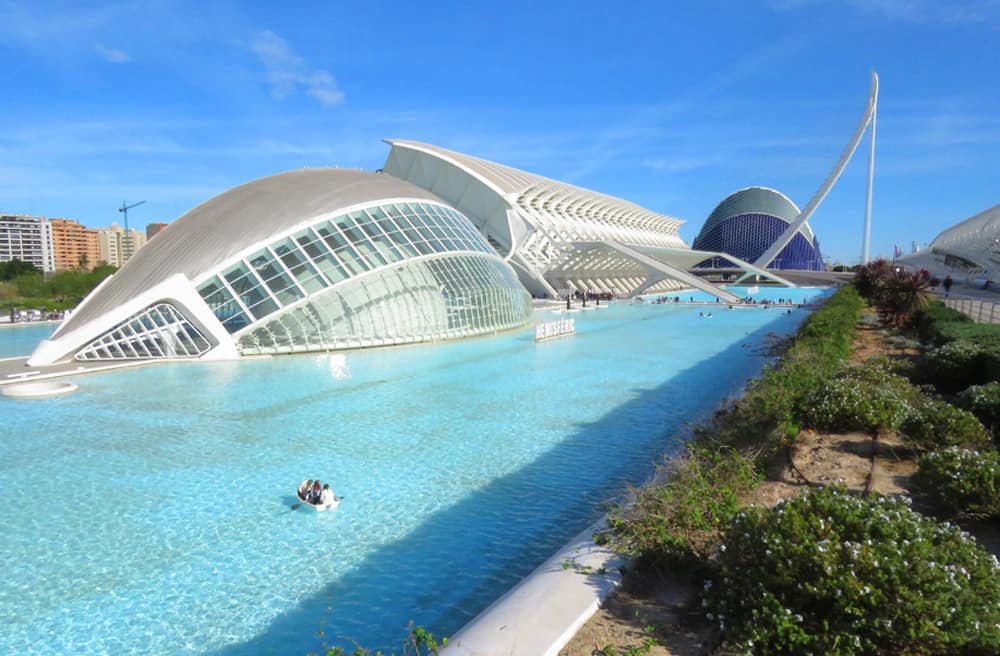

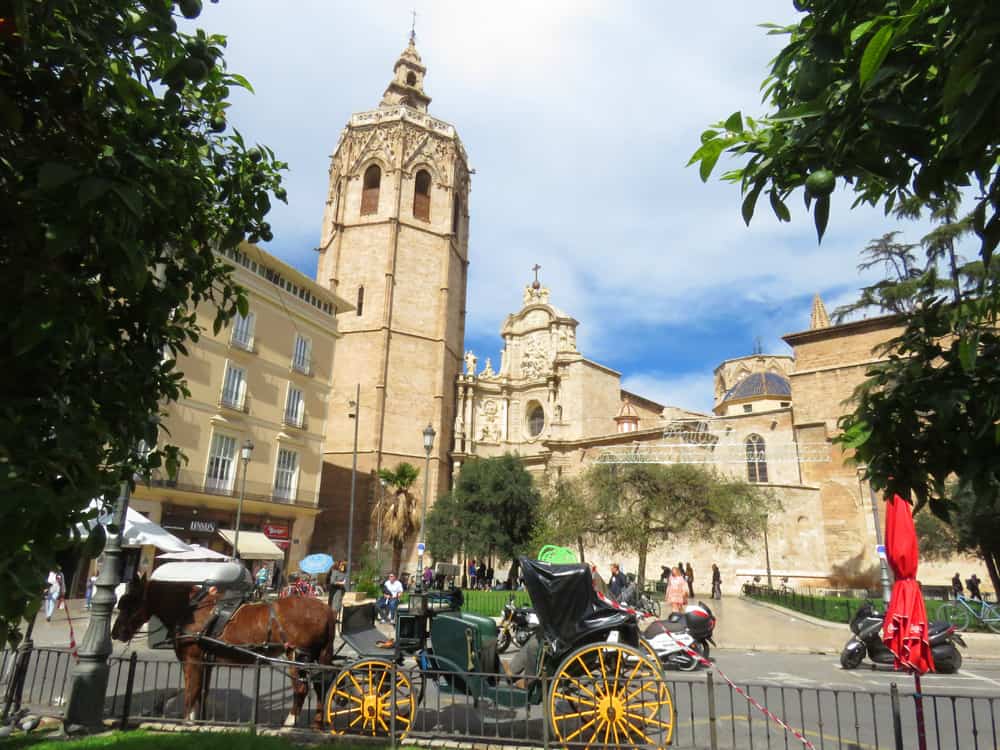
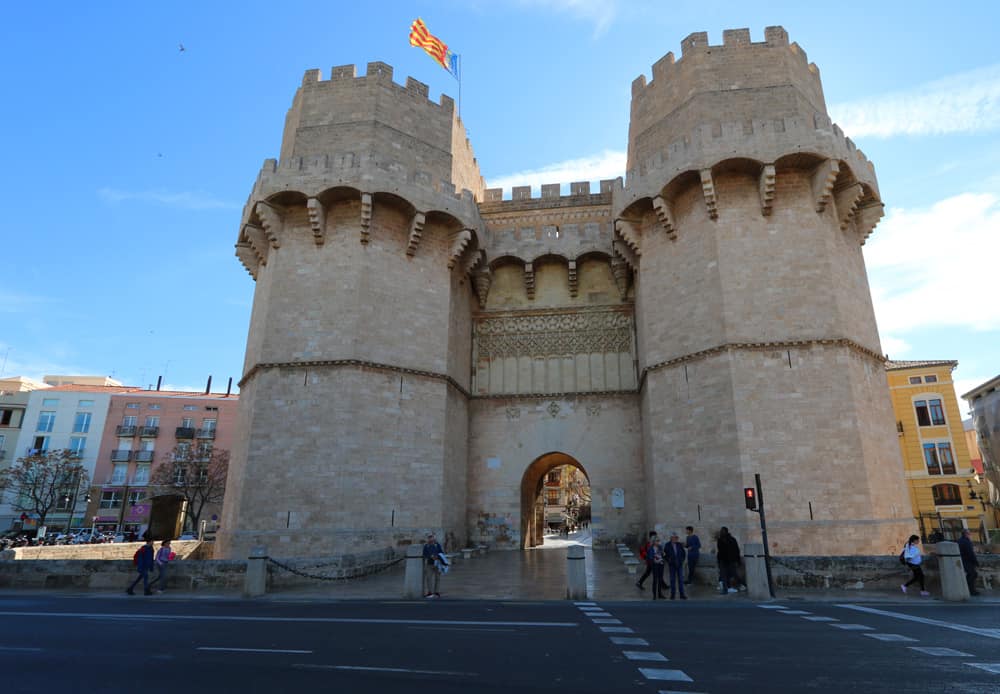
Summarizing
The above are all places we’ve been in Spain. It’s not a final list, there are cities we haven’t been and that I might add some here in the future.
The goal with this post however was to show that Barcelona should not be the first and only place that comes to mind when planning a trip to Spain. There are plenty of fantastic destinations in this country.
Related: The Best of the Costa del Sol
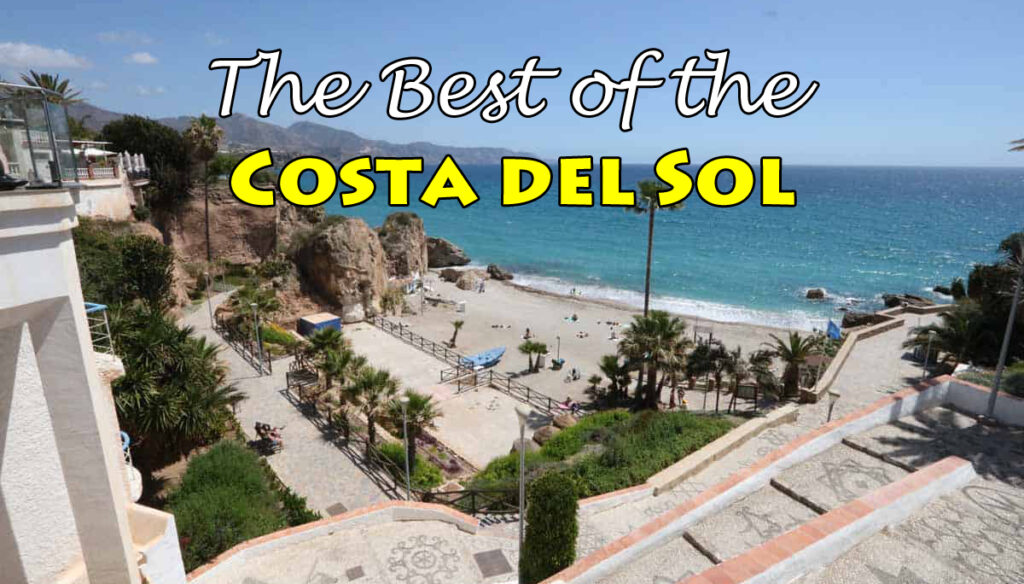

Great post. I have no desire to go to Barcelona either.
I’ve visited Barcelona 7 times. I’ve also been to Madrid, Toledo, A Coruna, Gijón, Bilbao, Tarragona, Sitges, Lanzarote, Figueres, and Cadaques. I have plans this month to also visit Seville, Granada, Cordoba and other tbd destinations. My favorite place in the world is Cadaques for the serenity and stunning light. I will continue to return to BCN for my fix of European NYC.
I agree with the article – Barcelona’s overtourism and the higher tourist tax make it less appealing for 2025. Cities like Segovia, Salamanca, and Ávila offer just as much history and charm, without the crowds. It’s worth exploring these lesser-known gems for a more authentic experience in Spain.